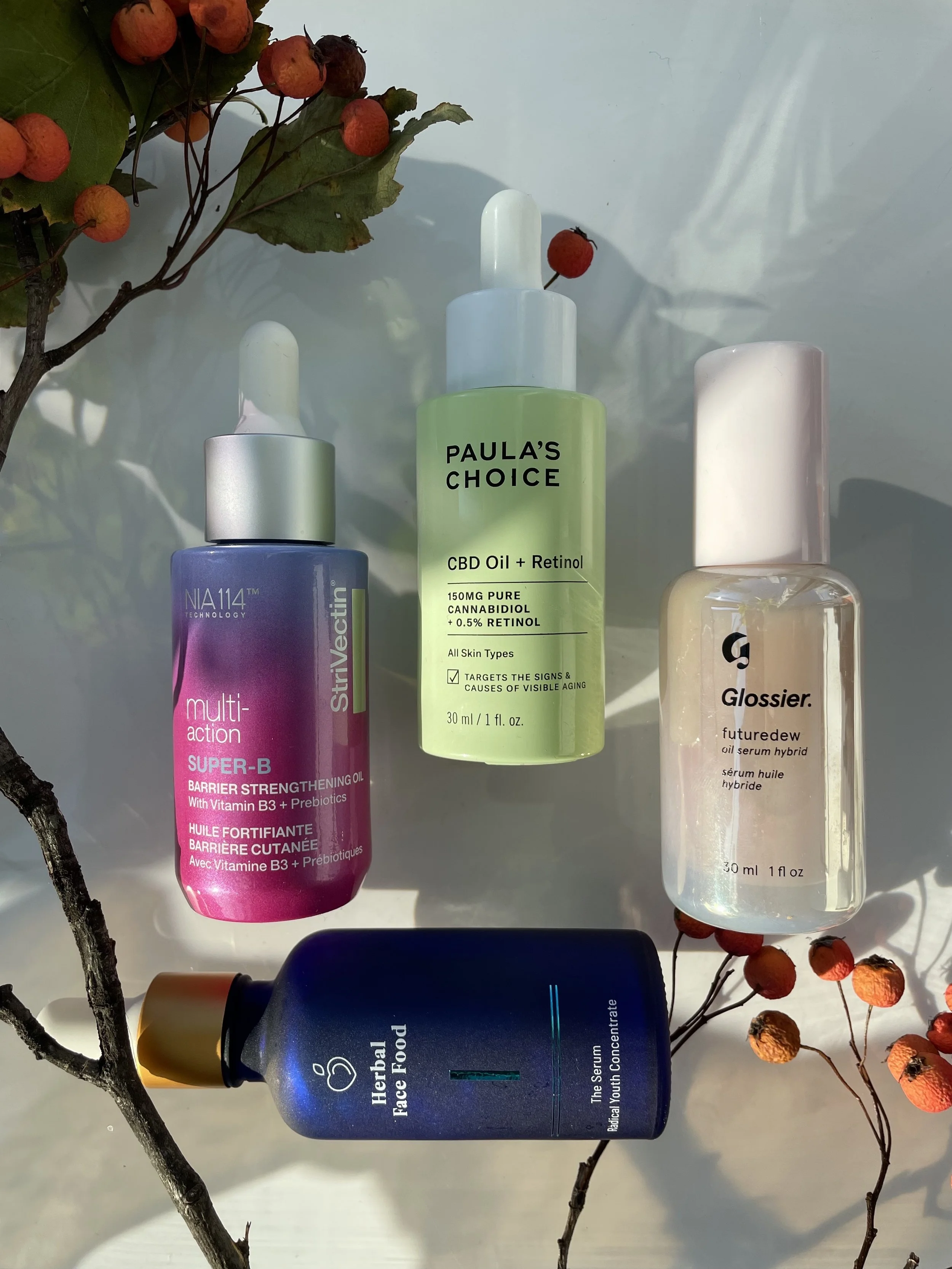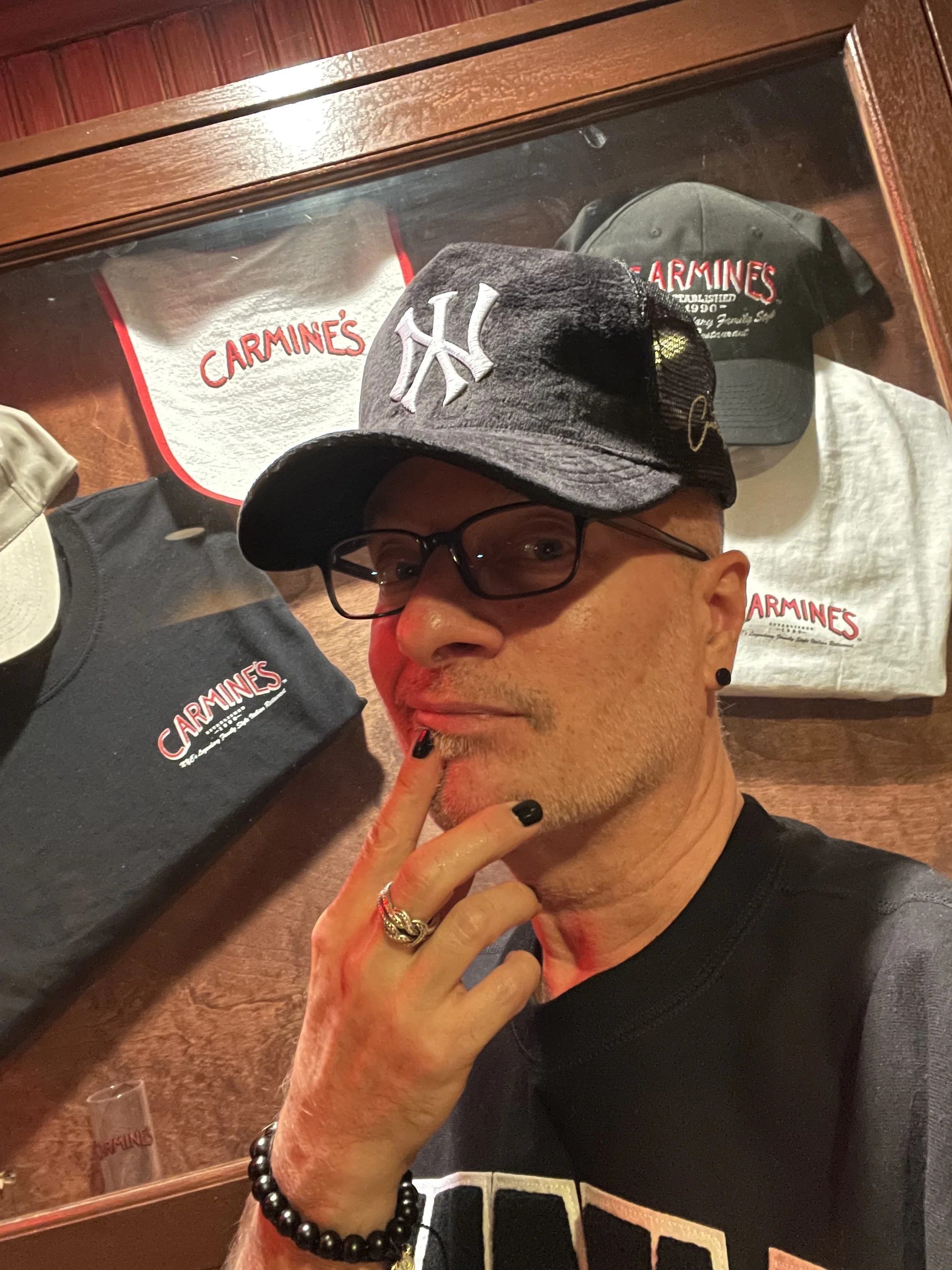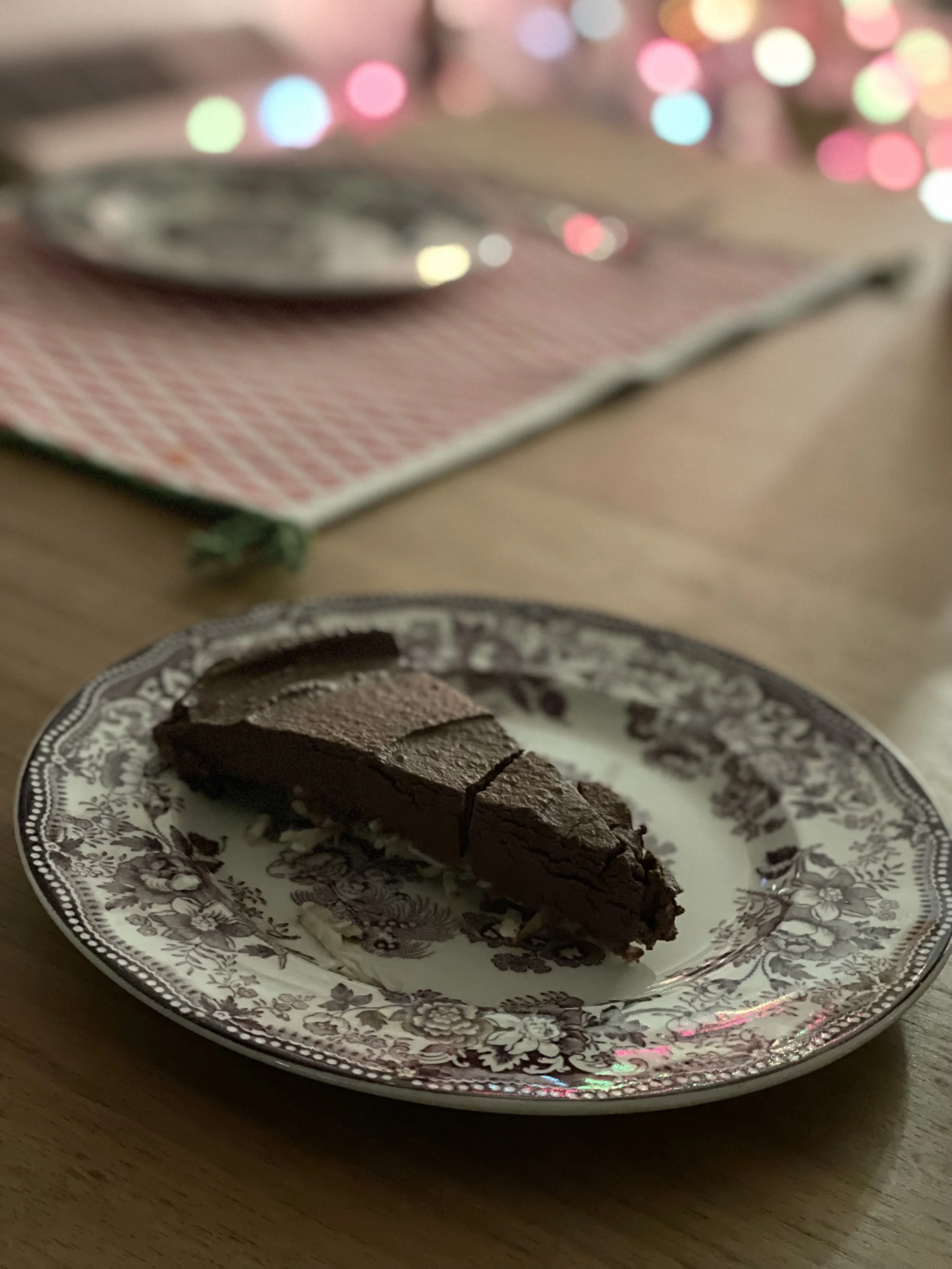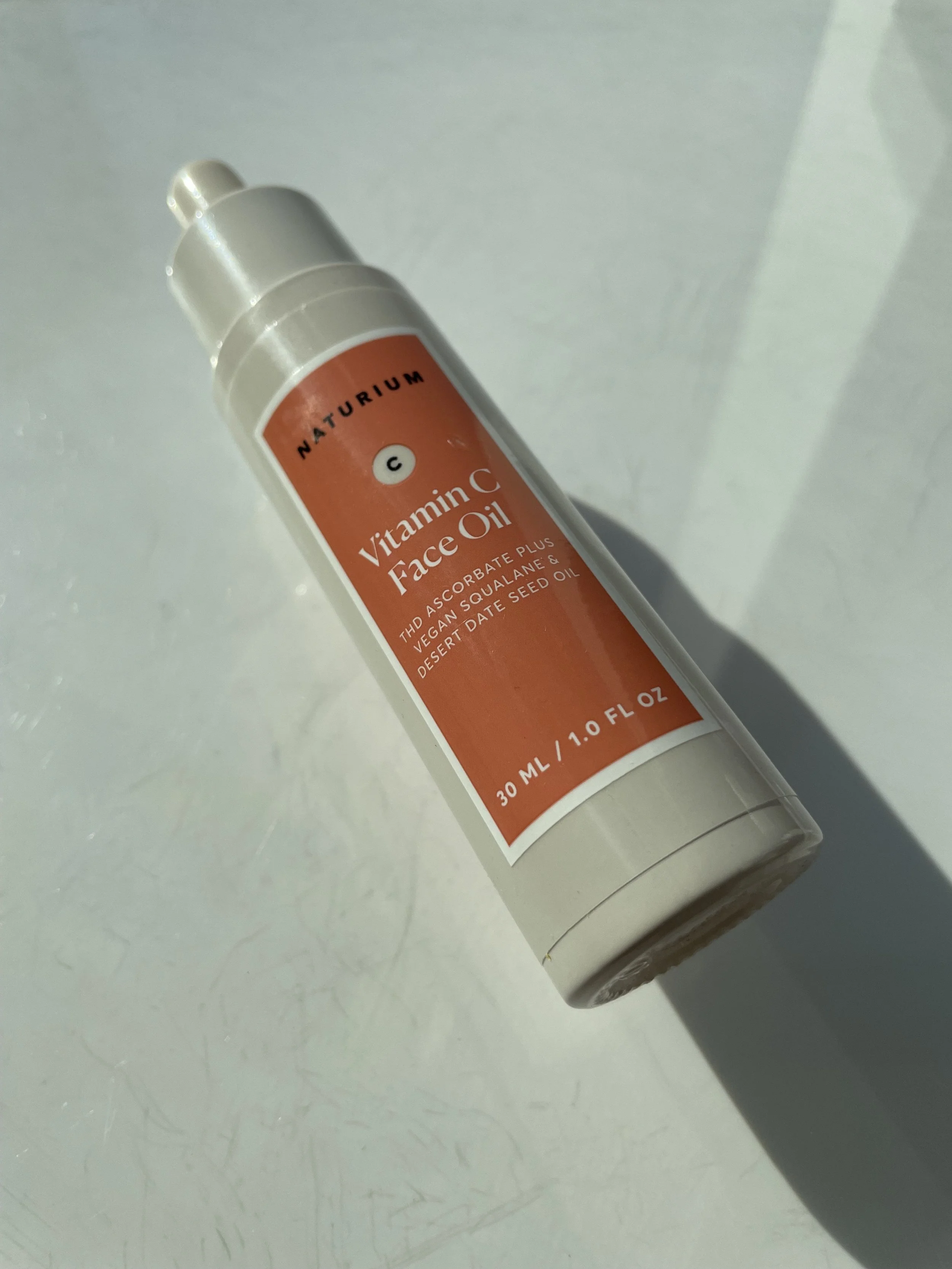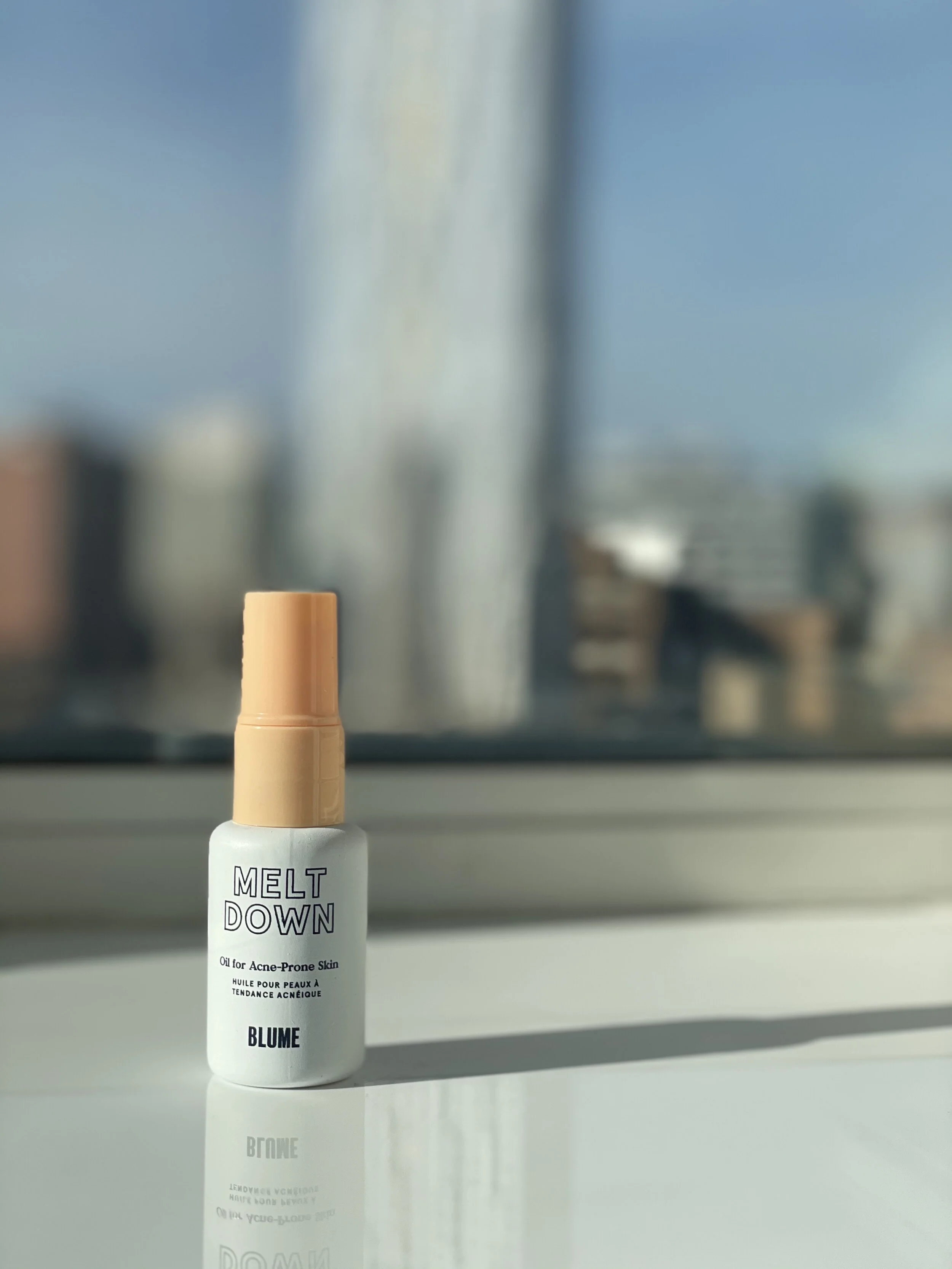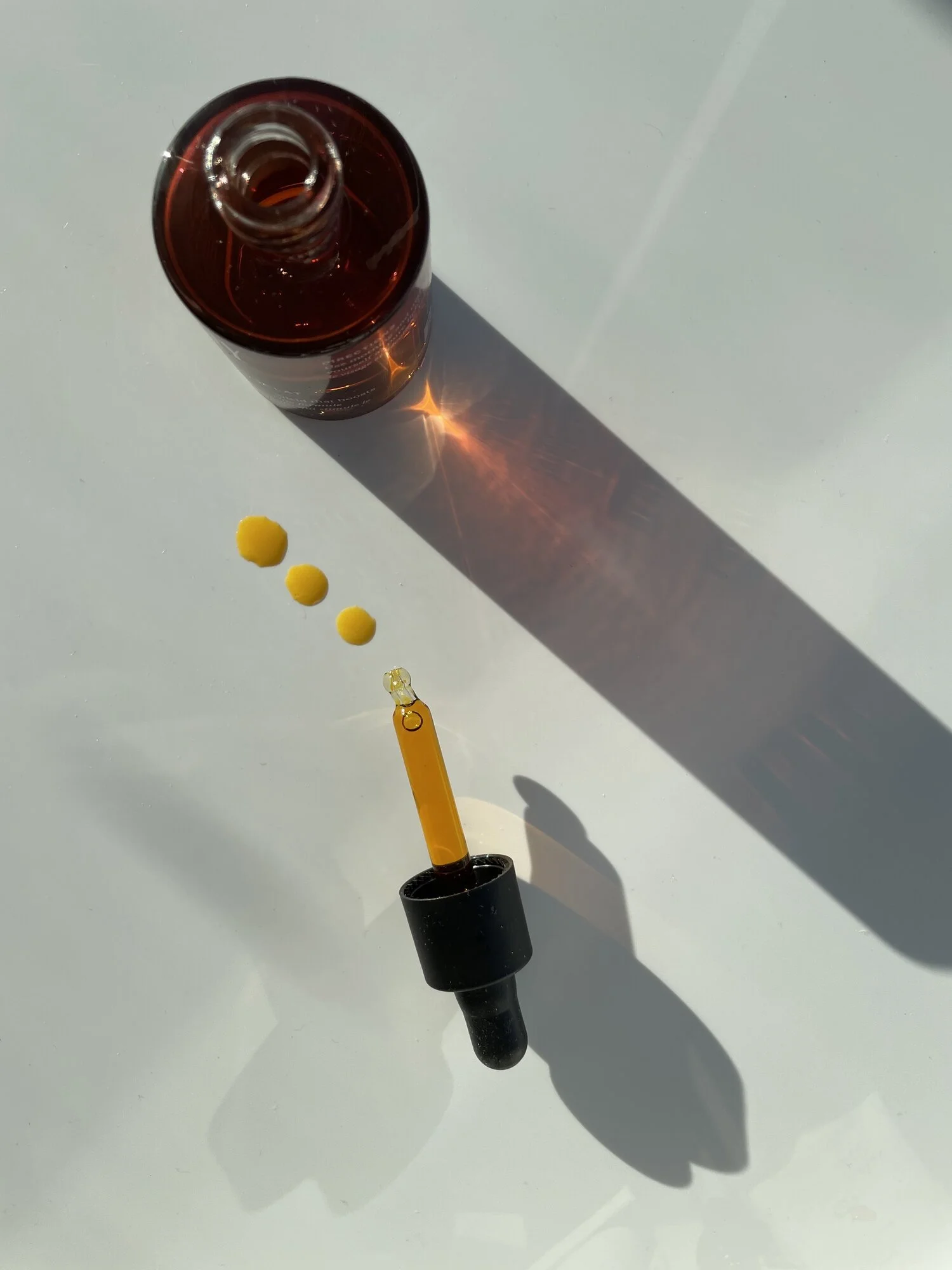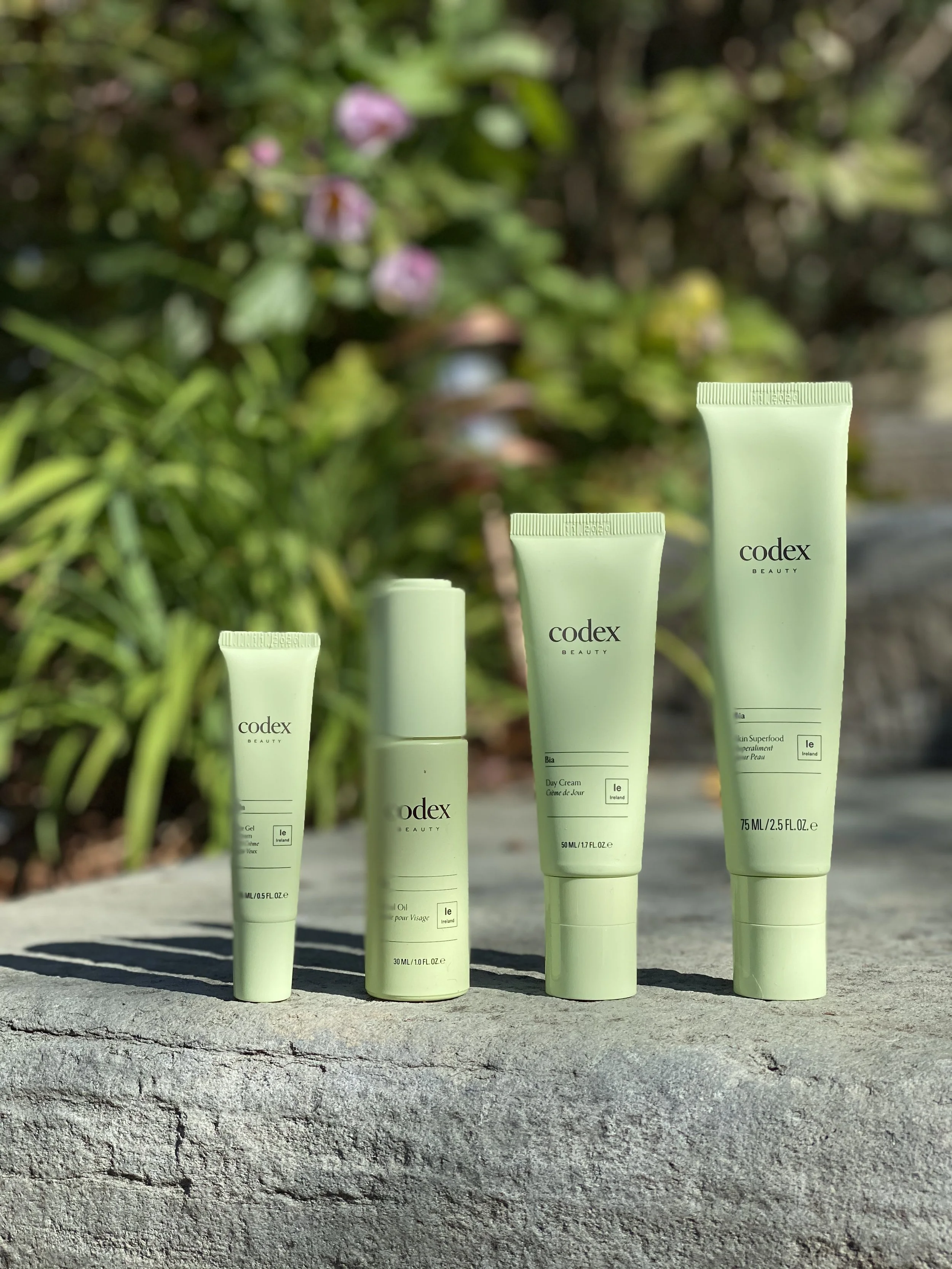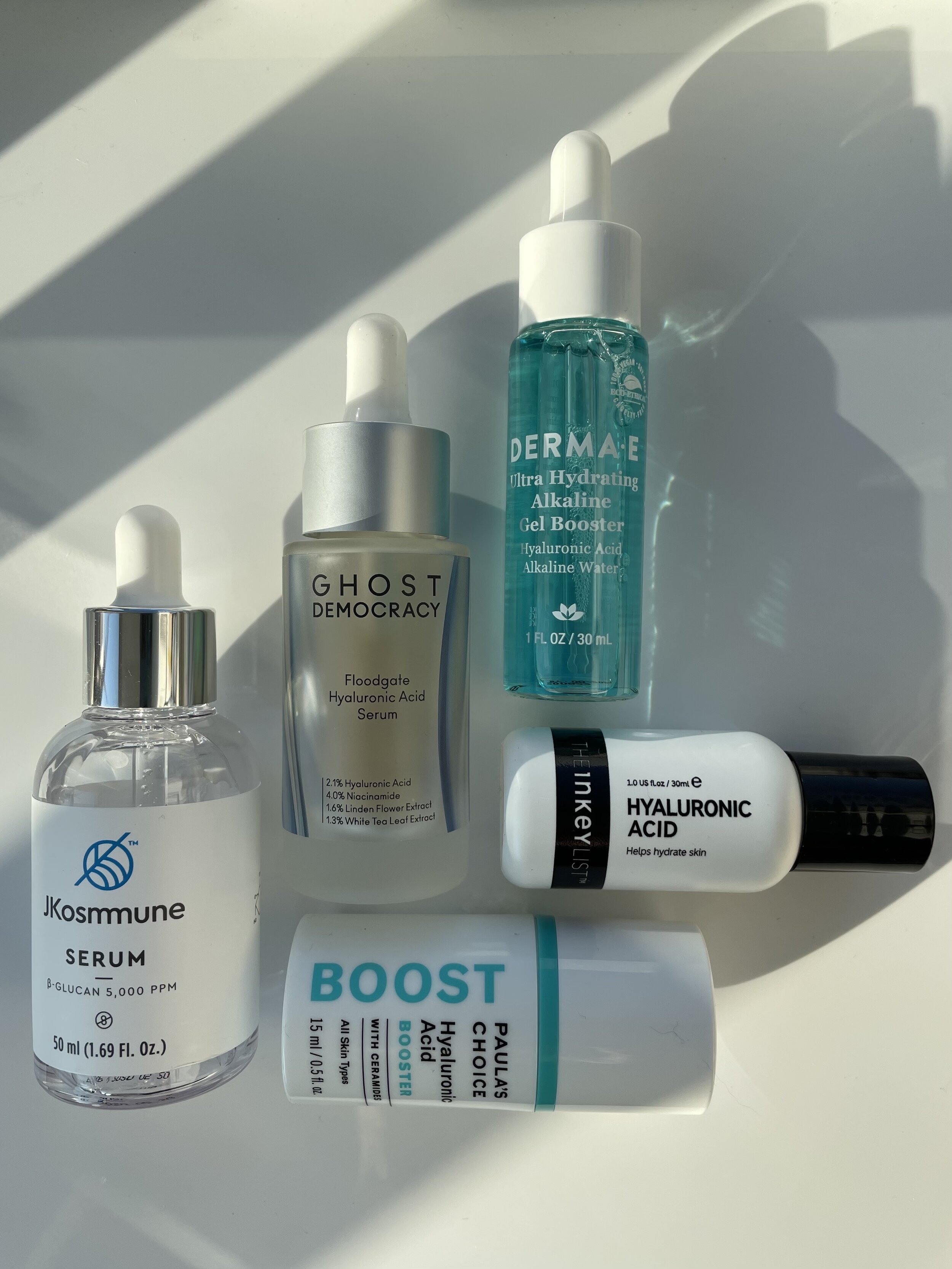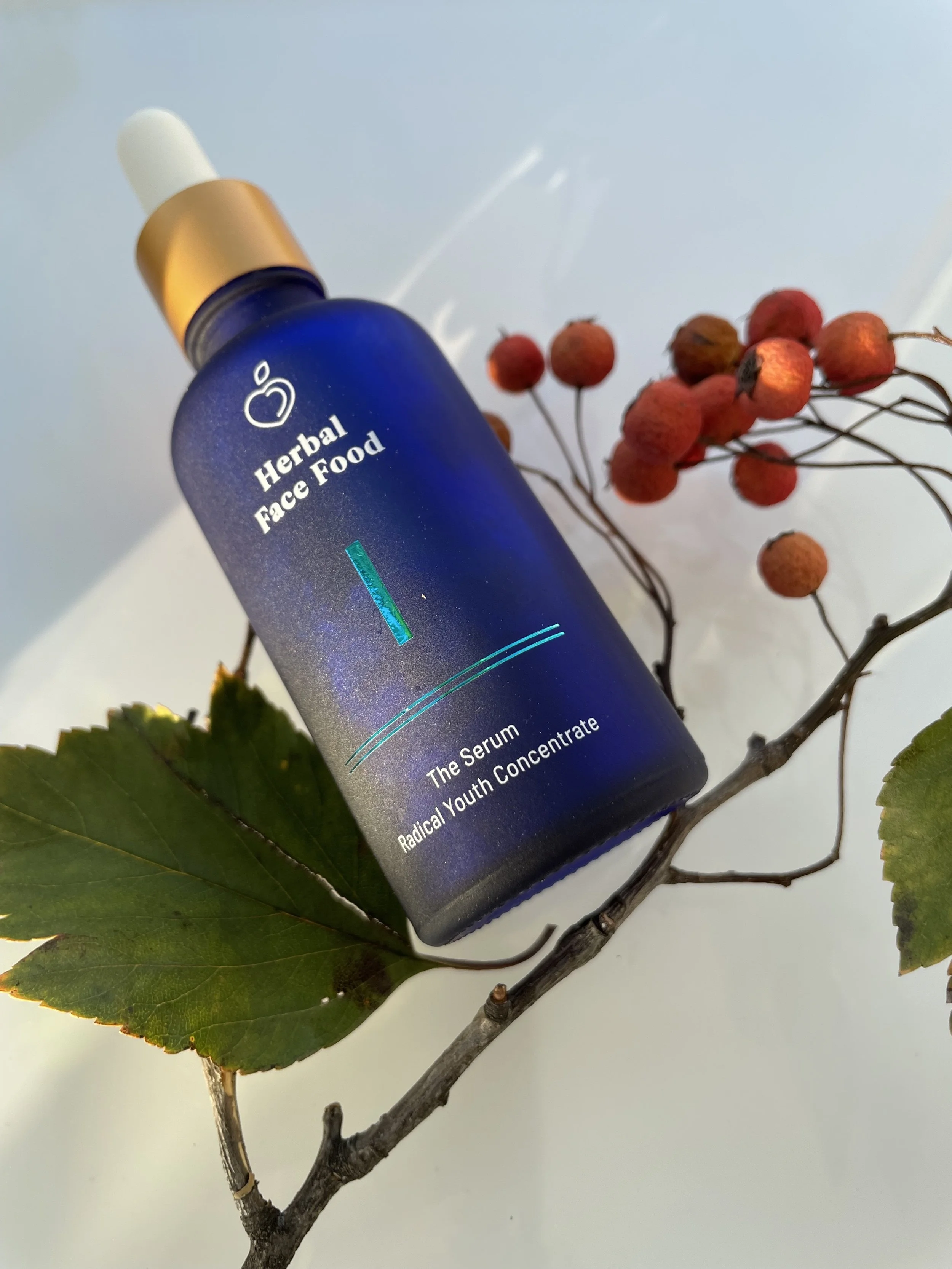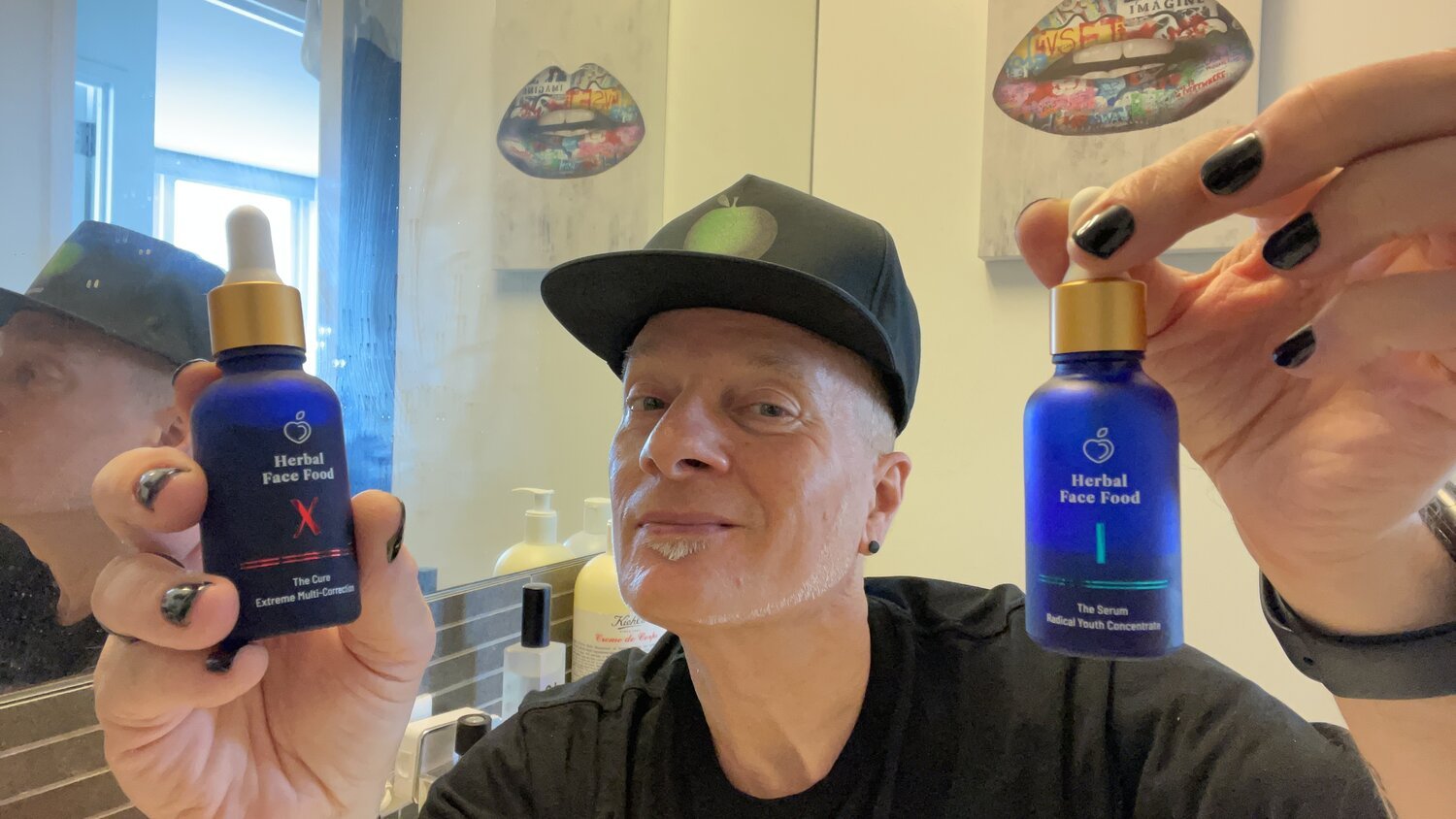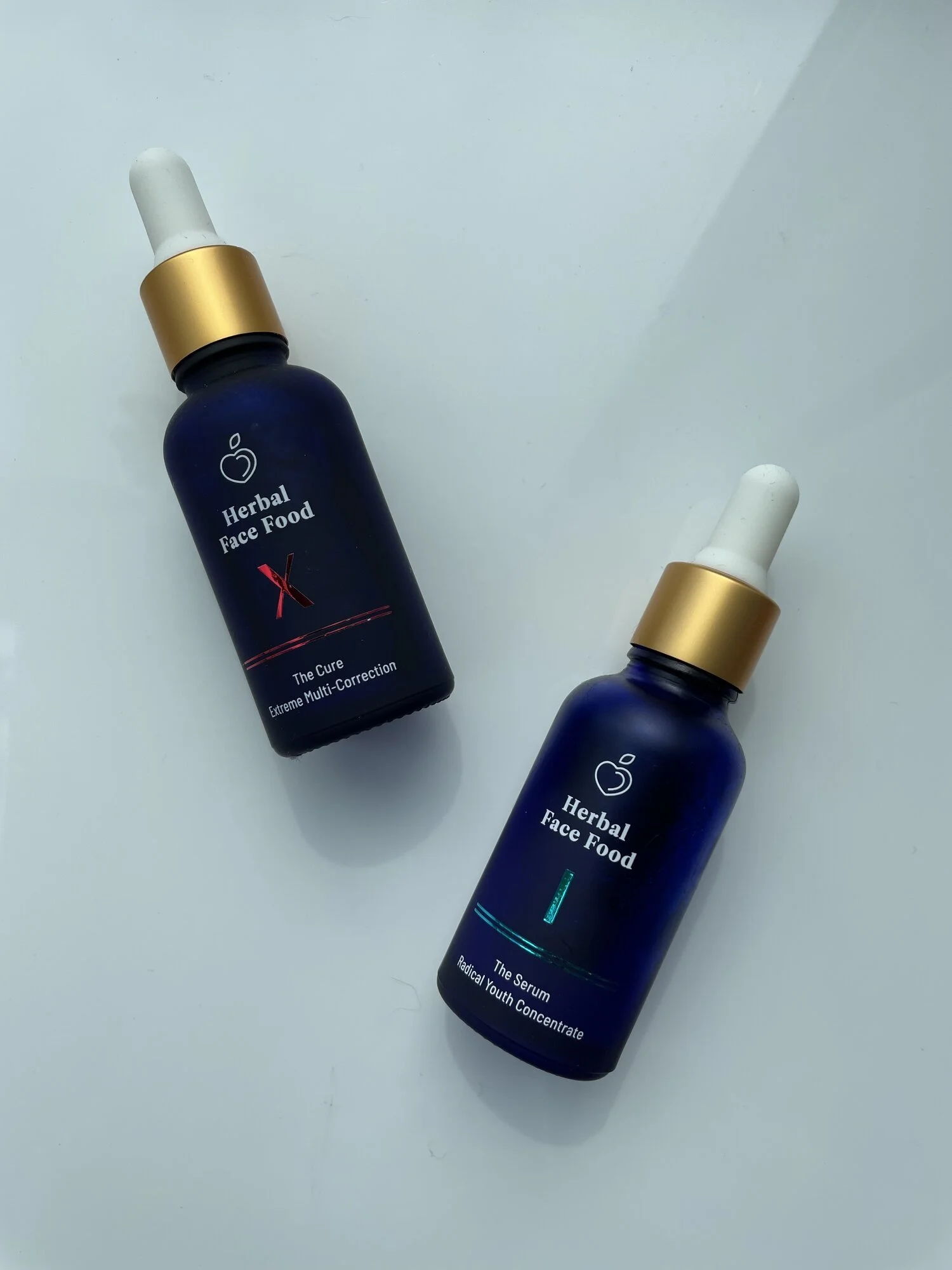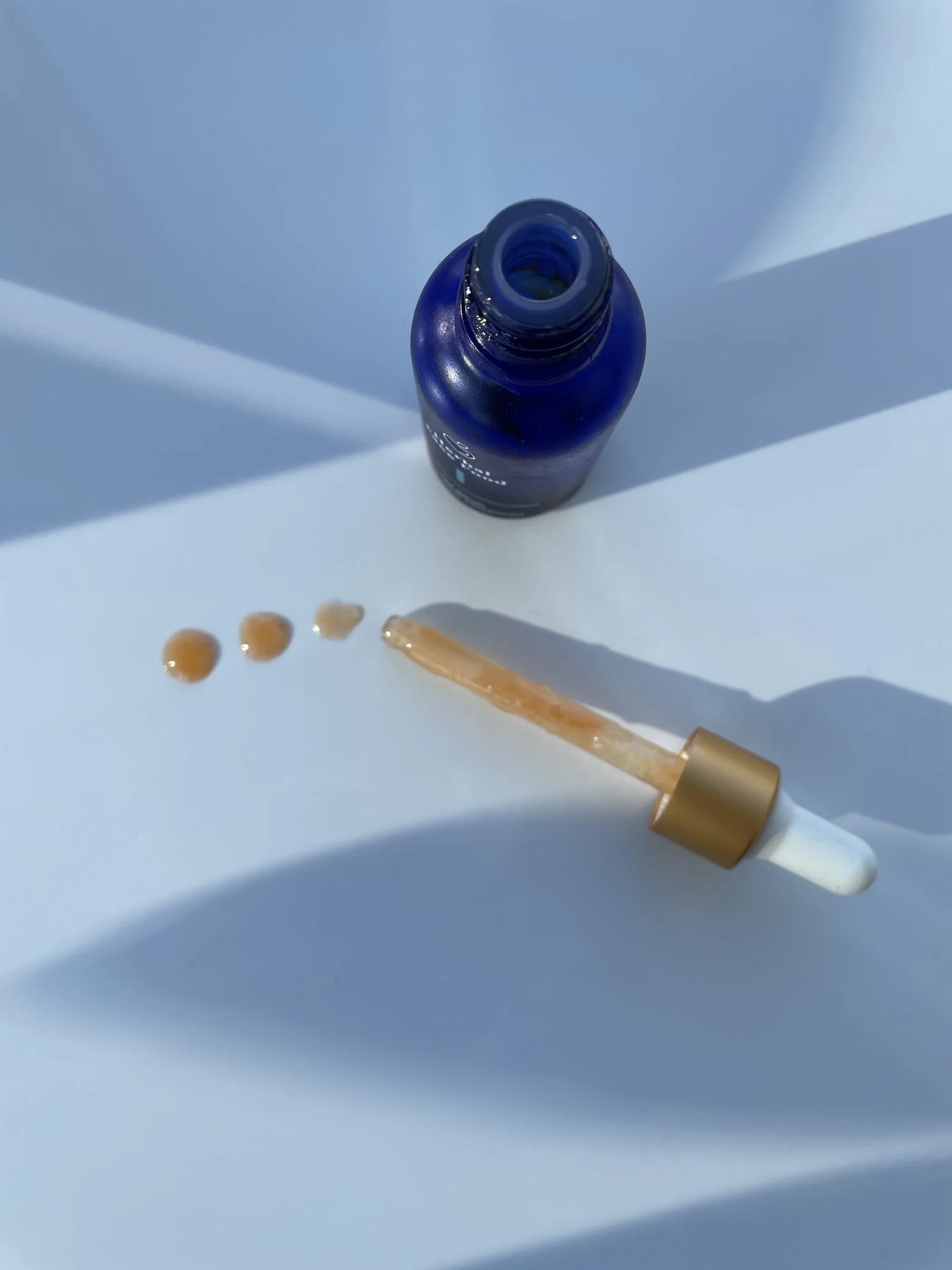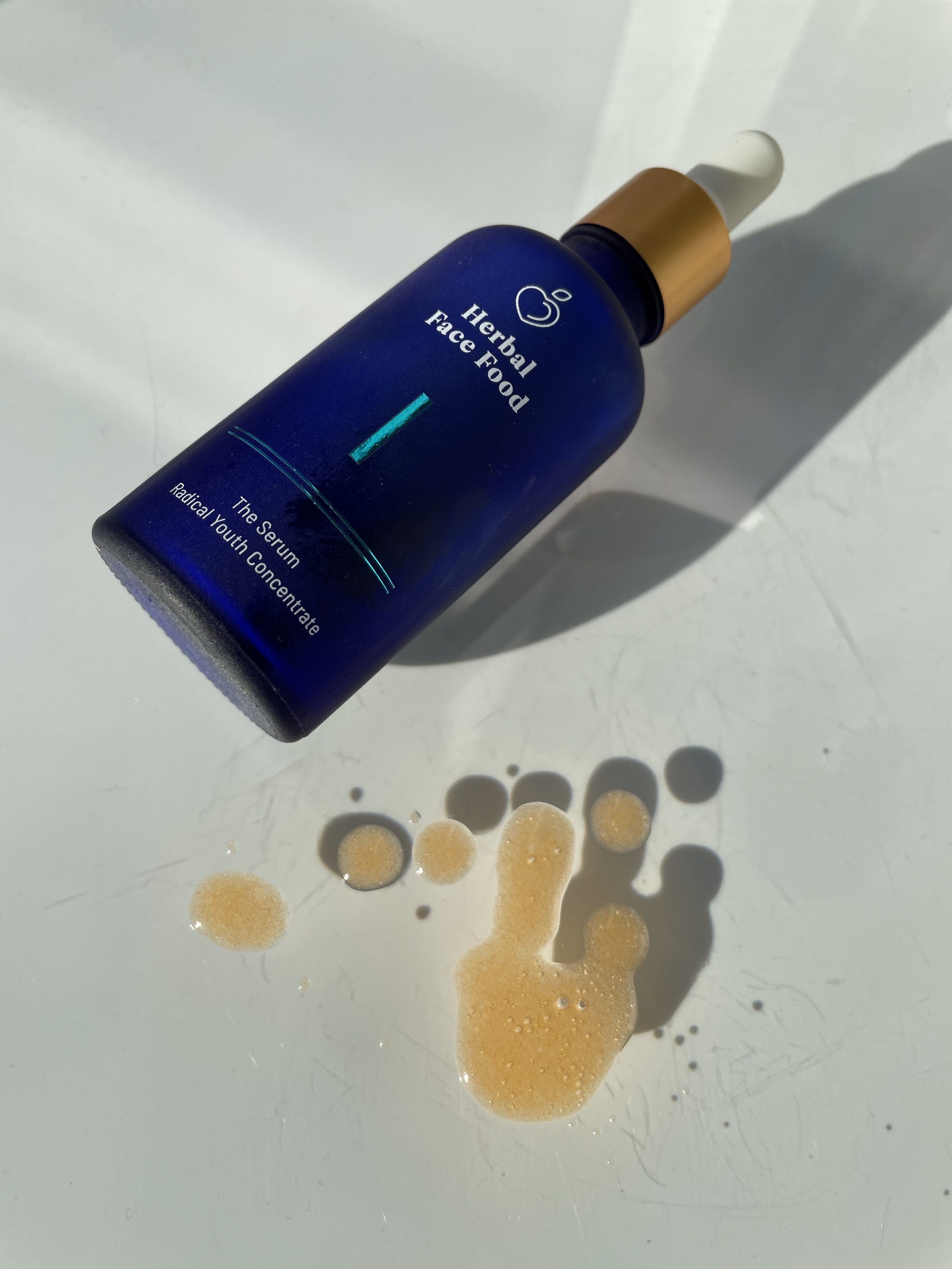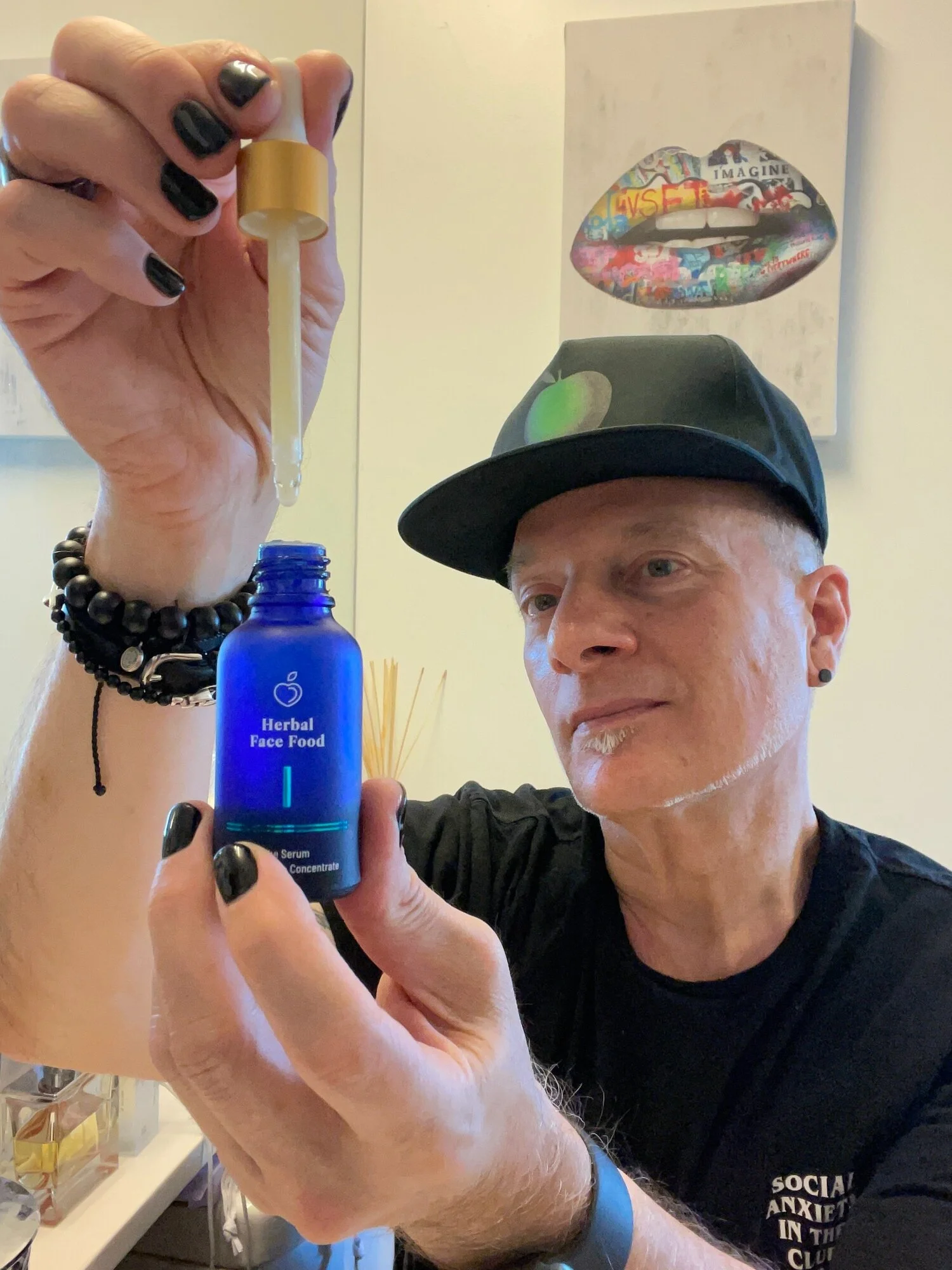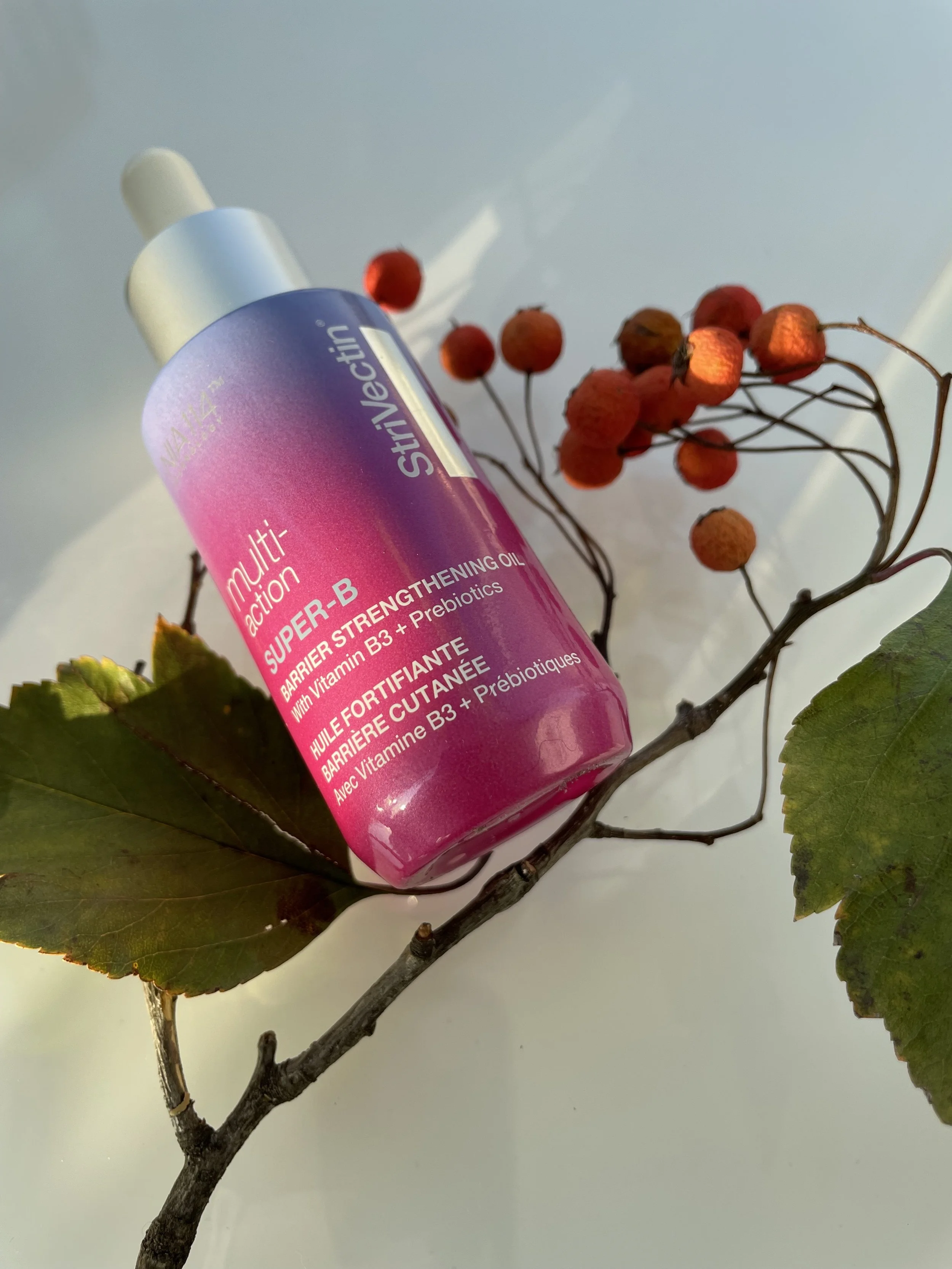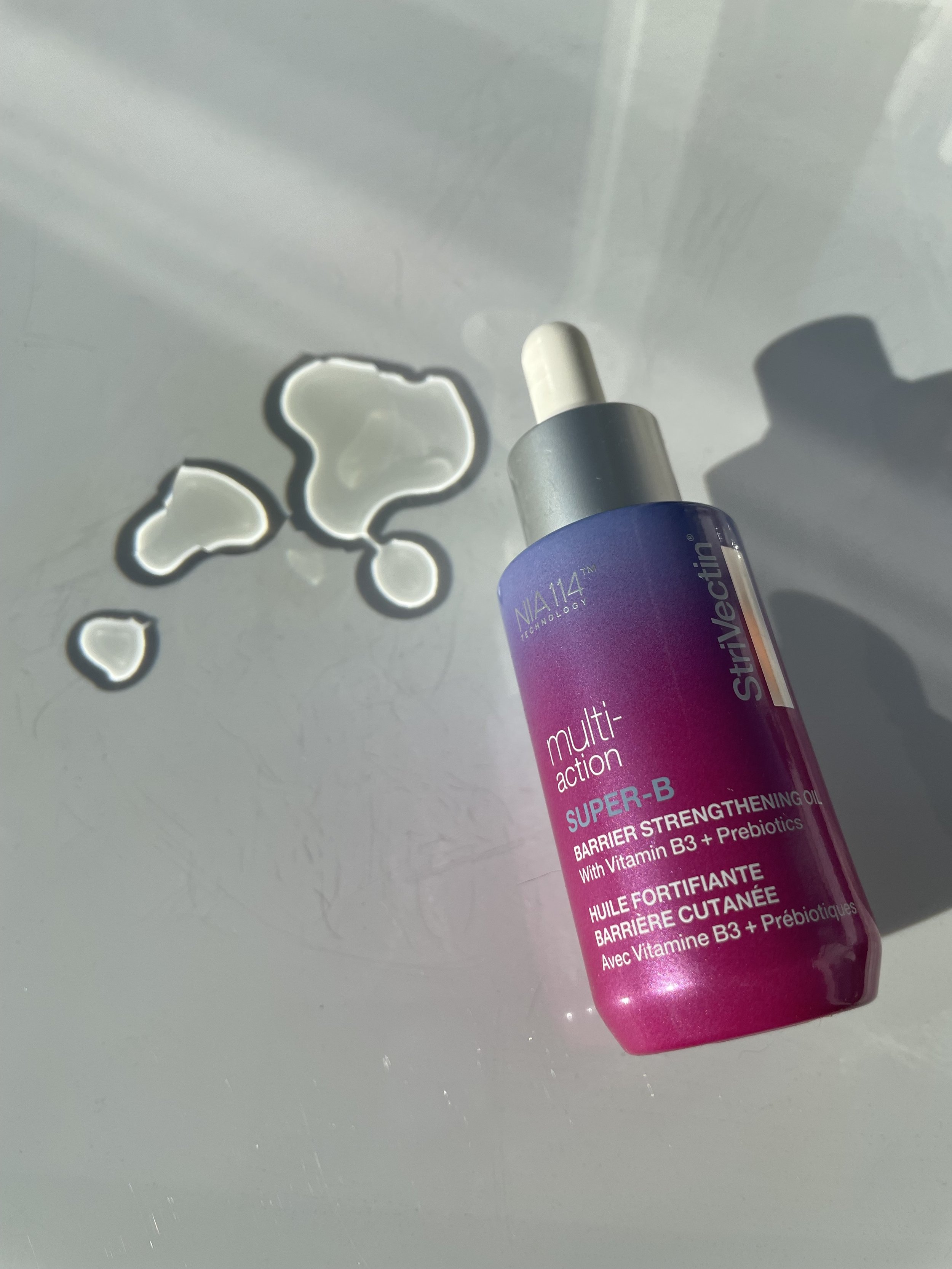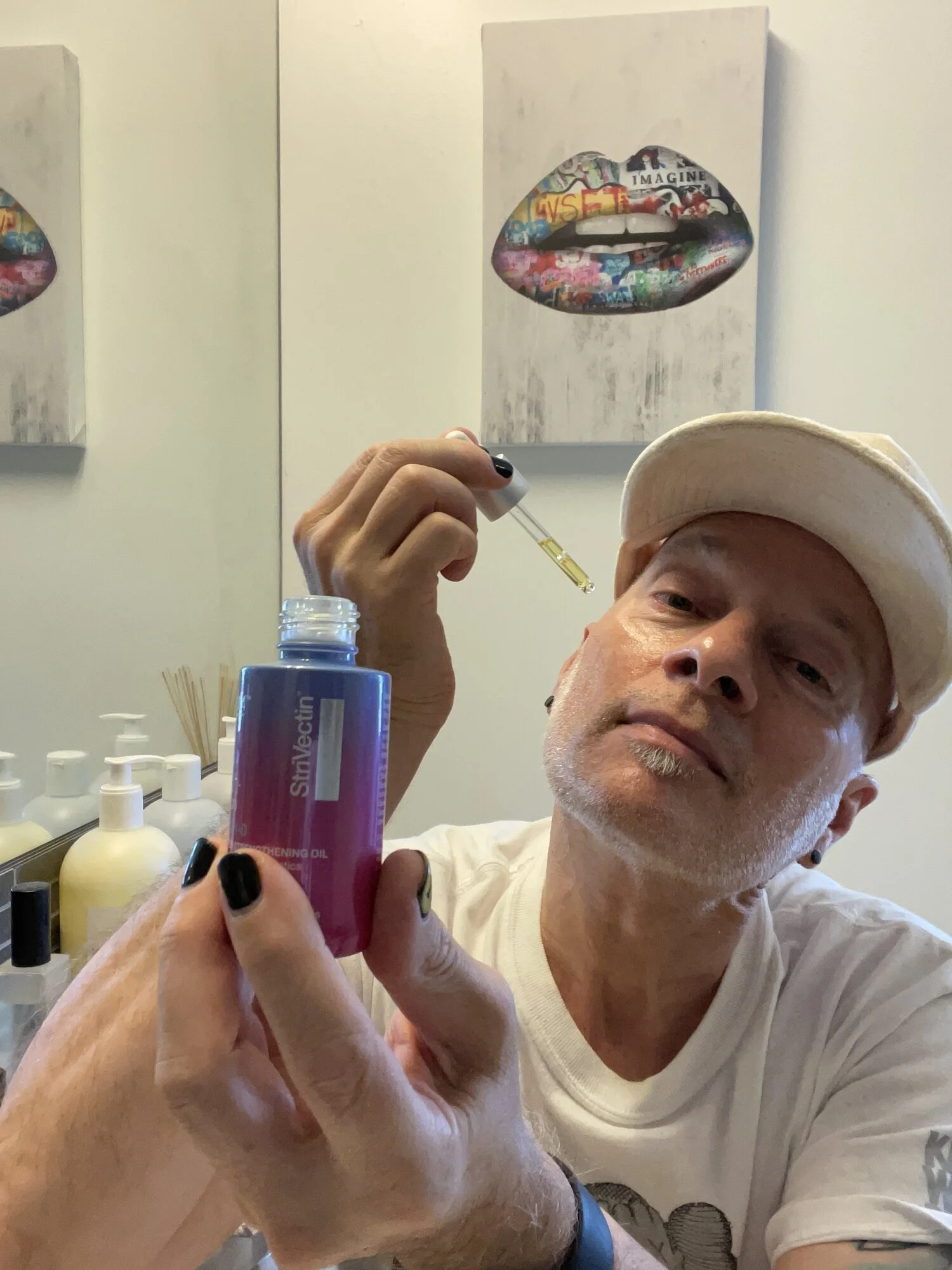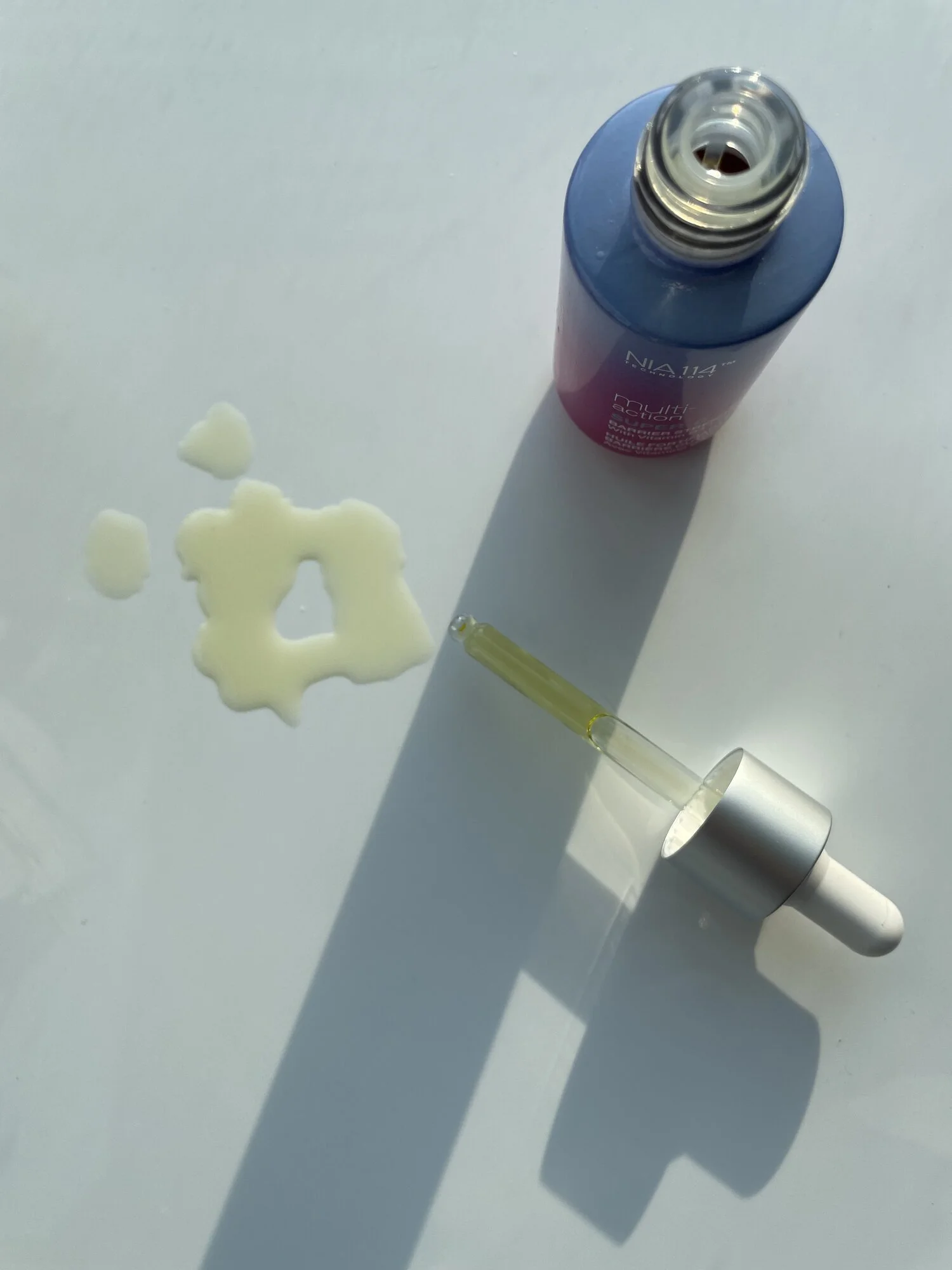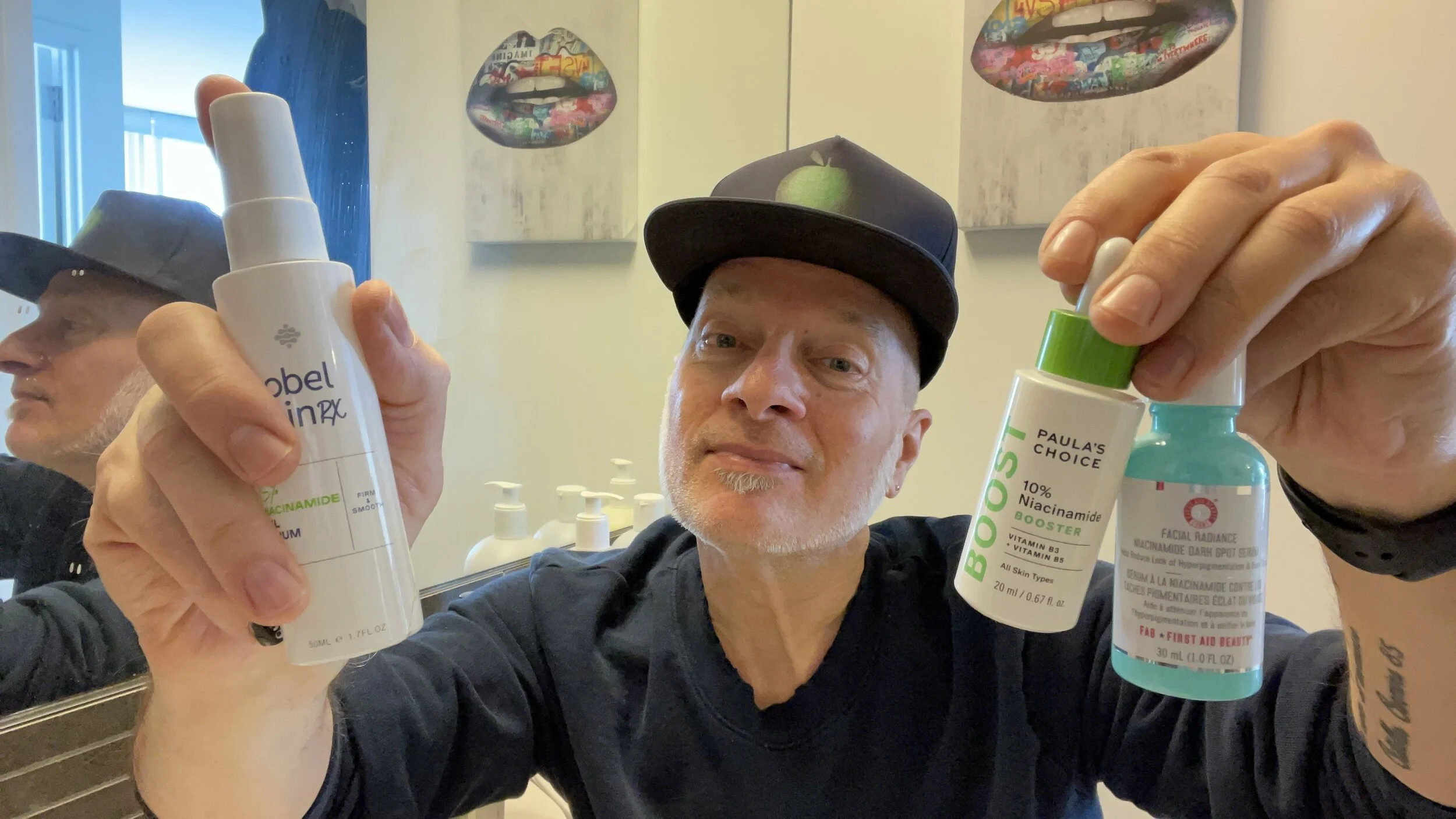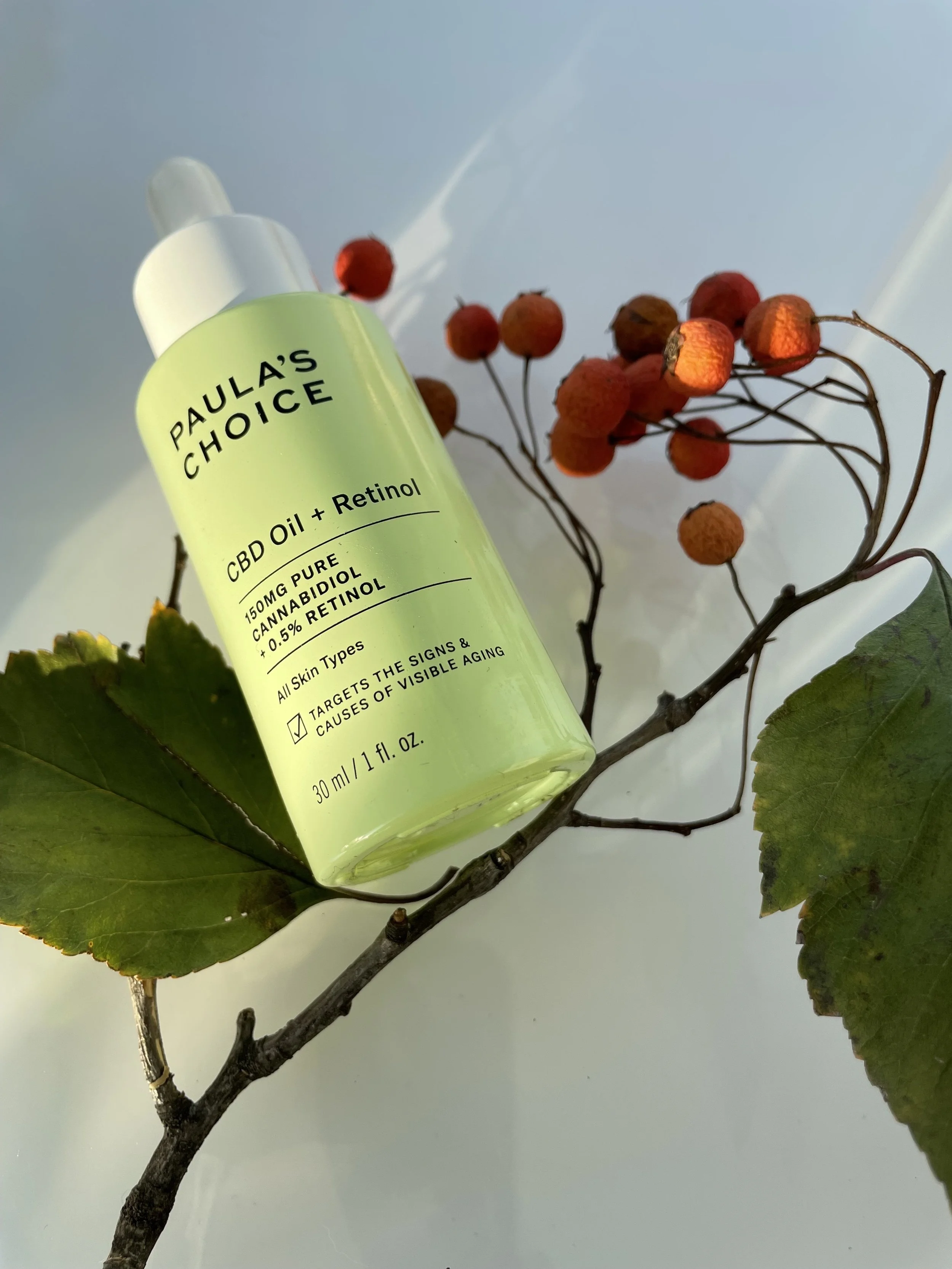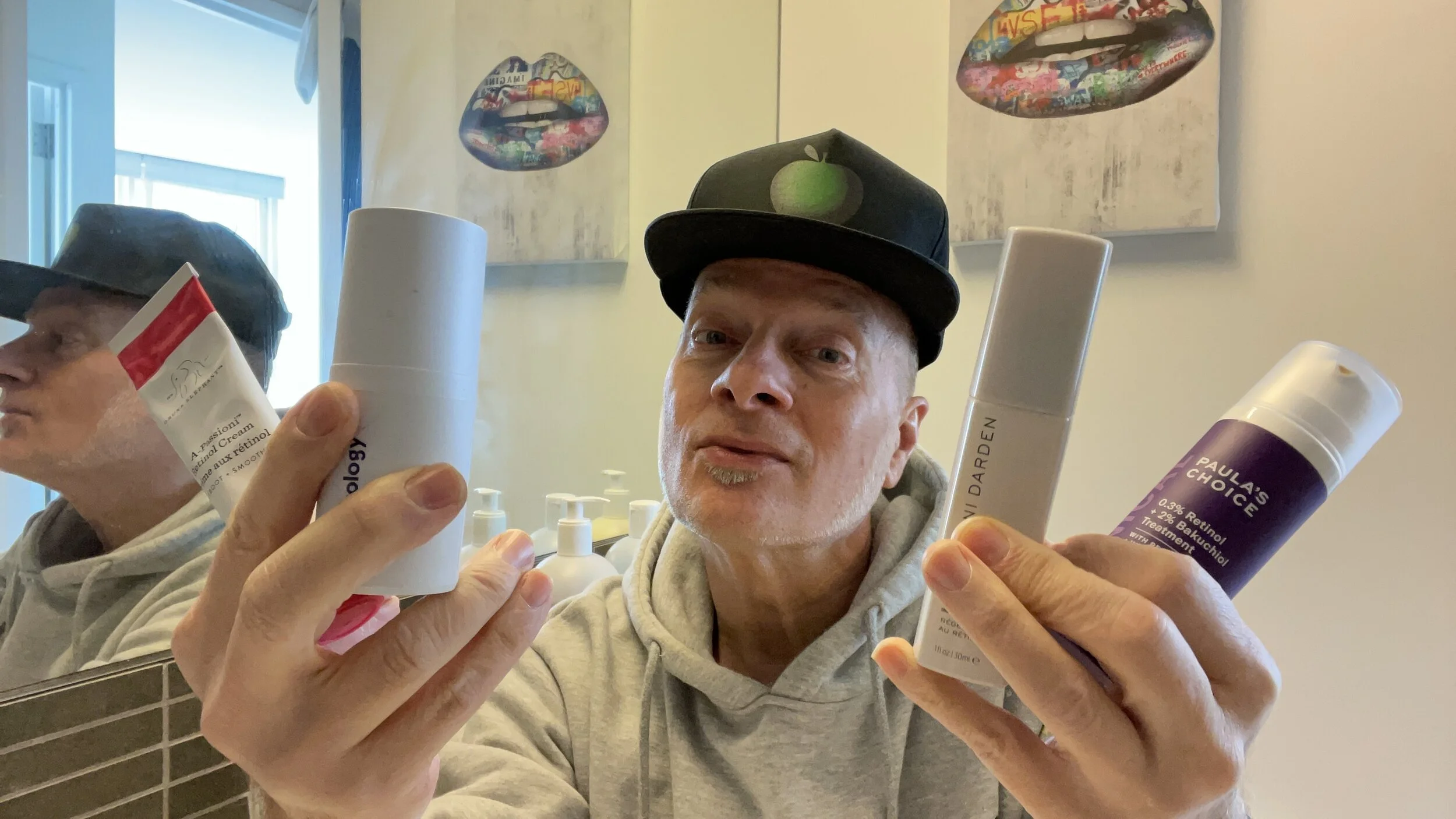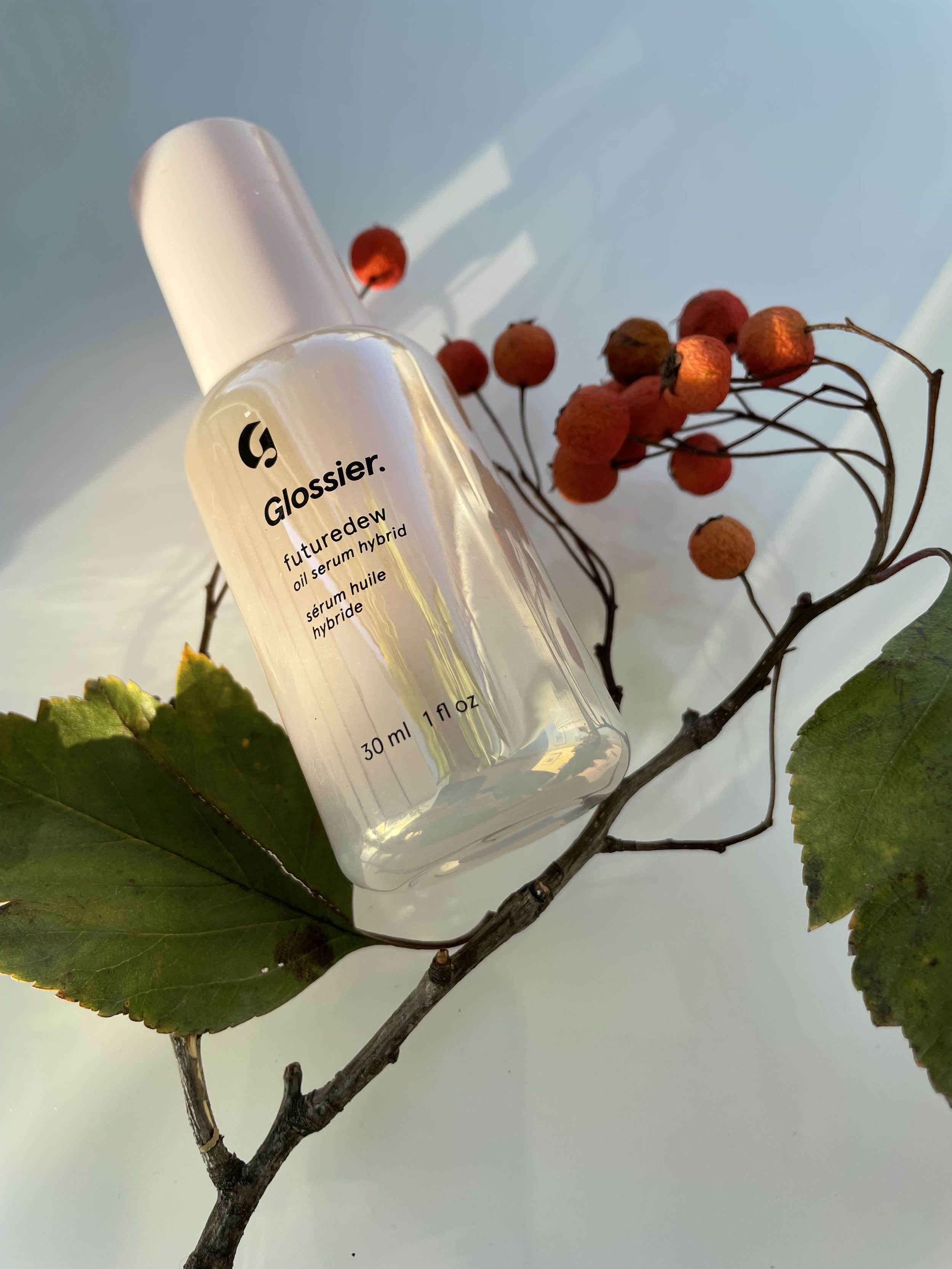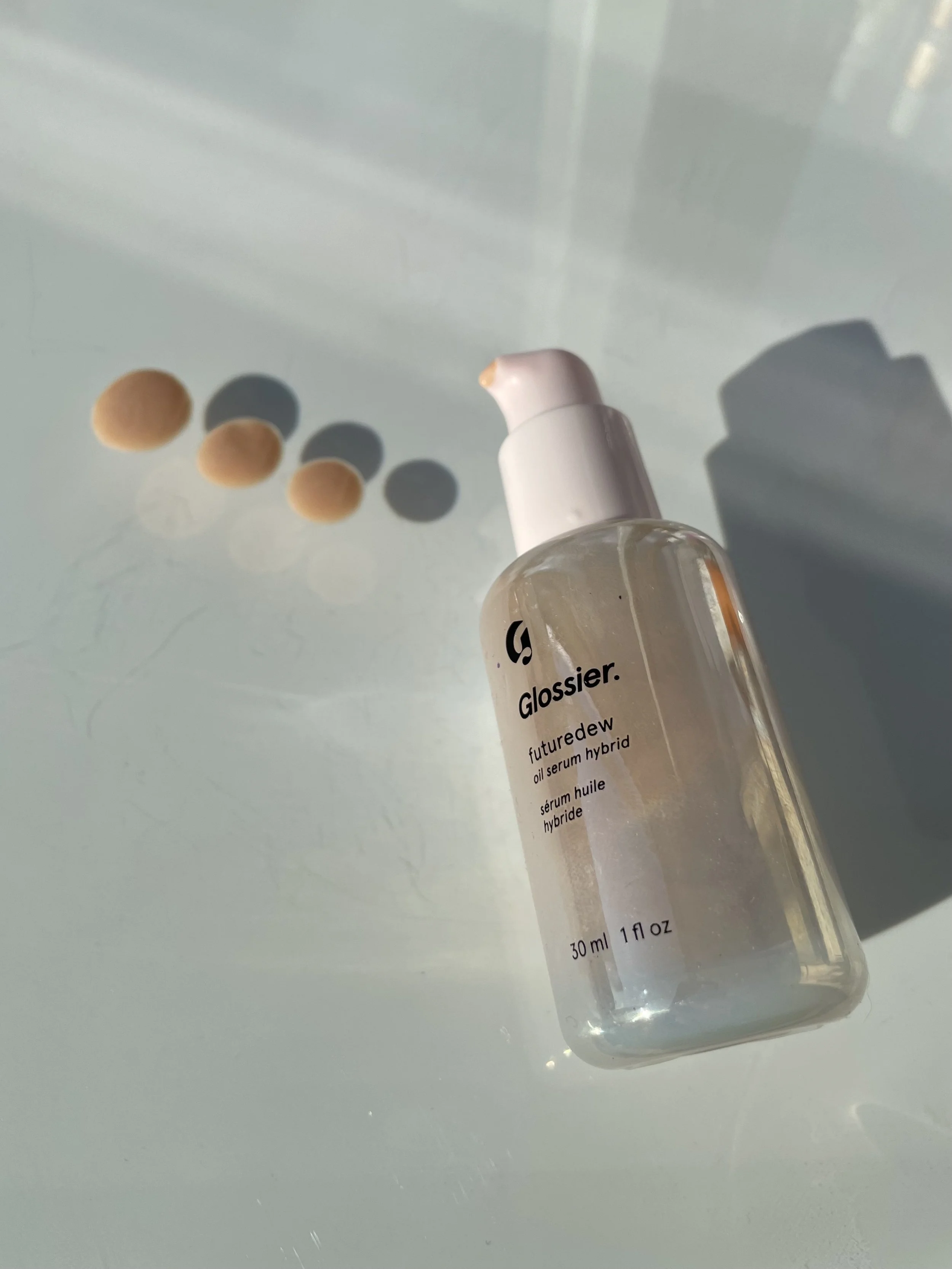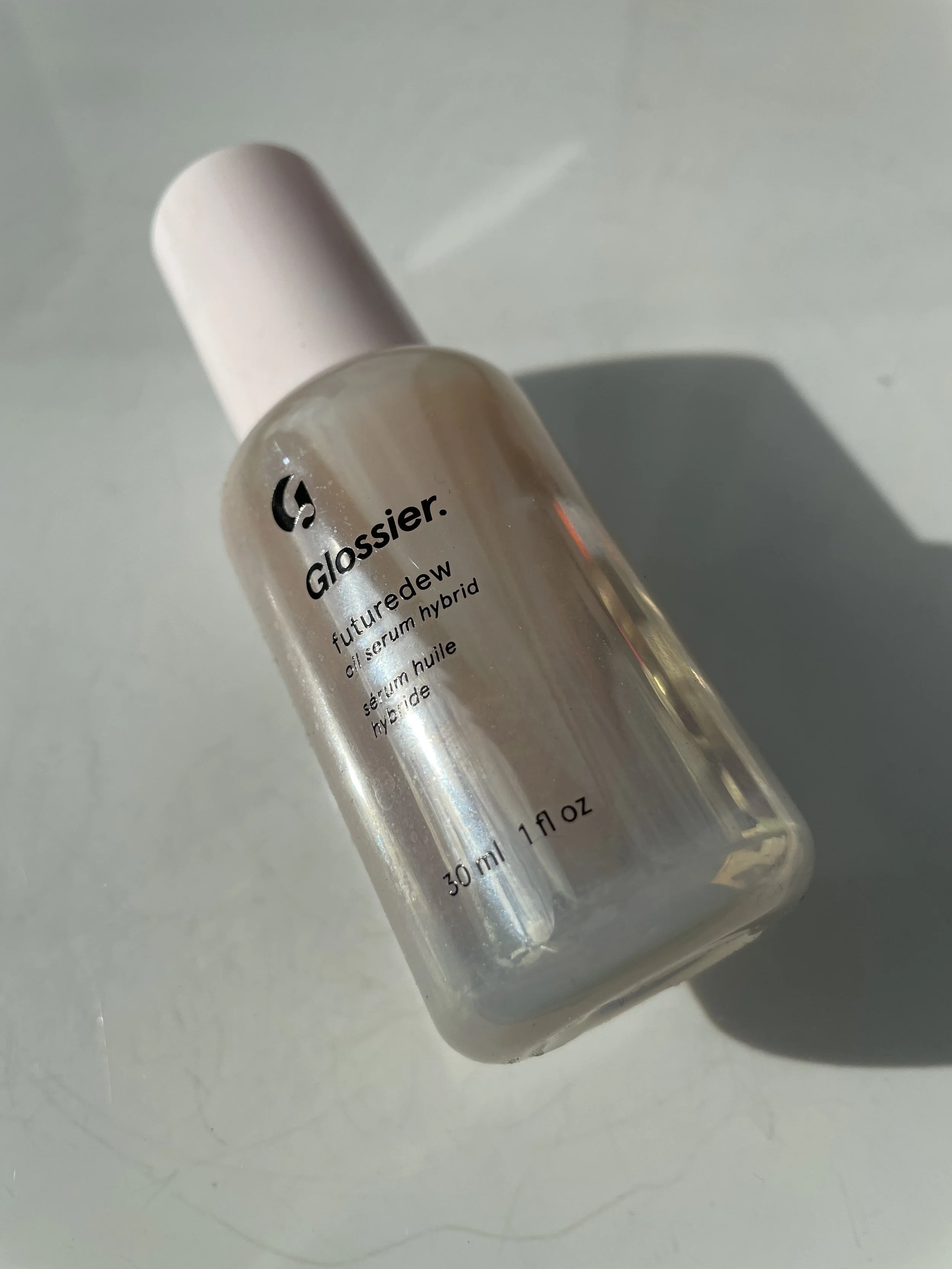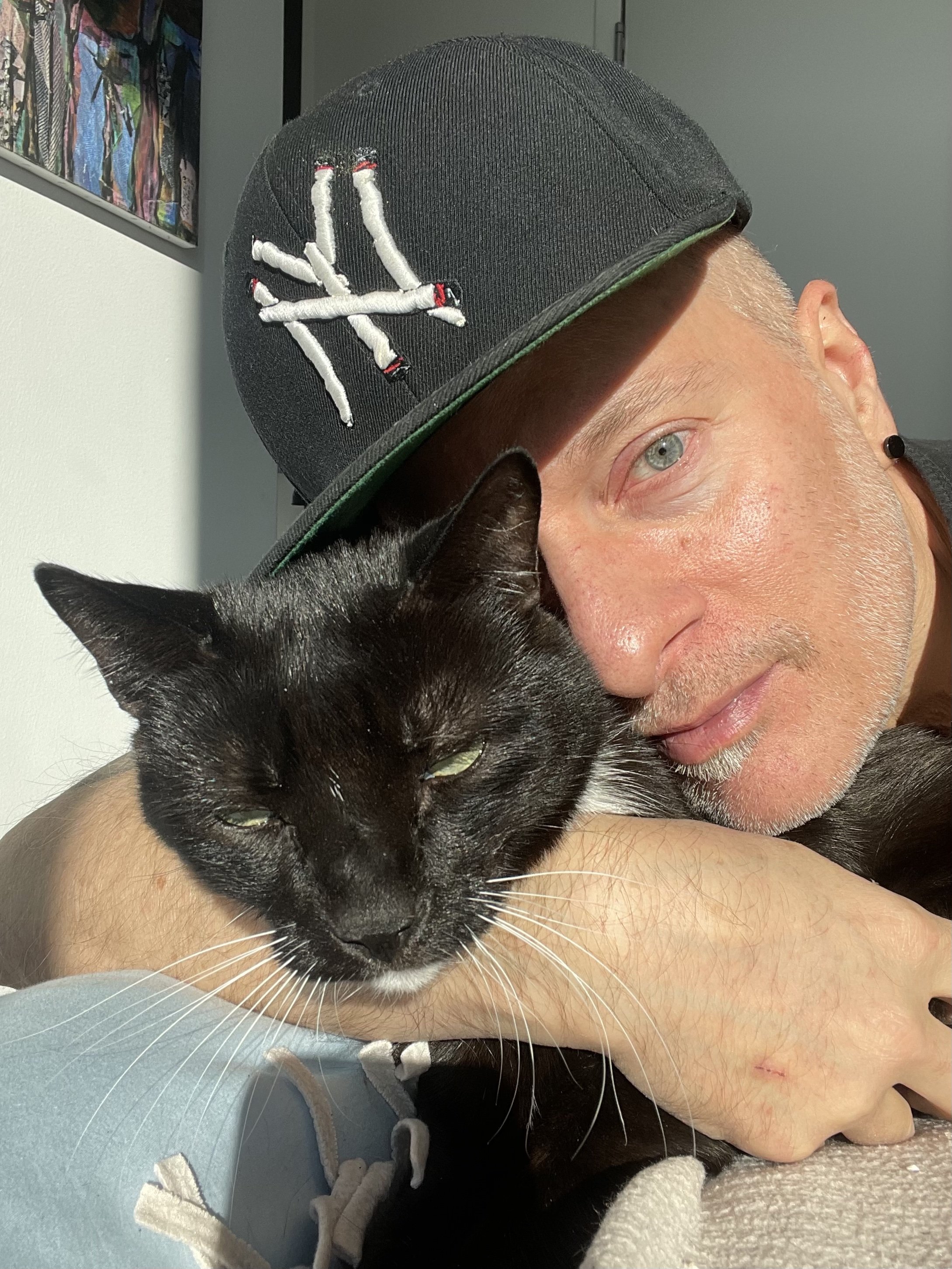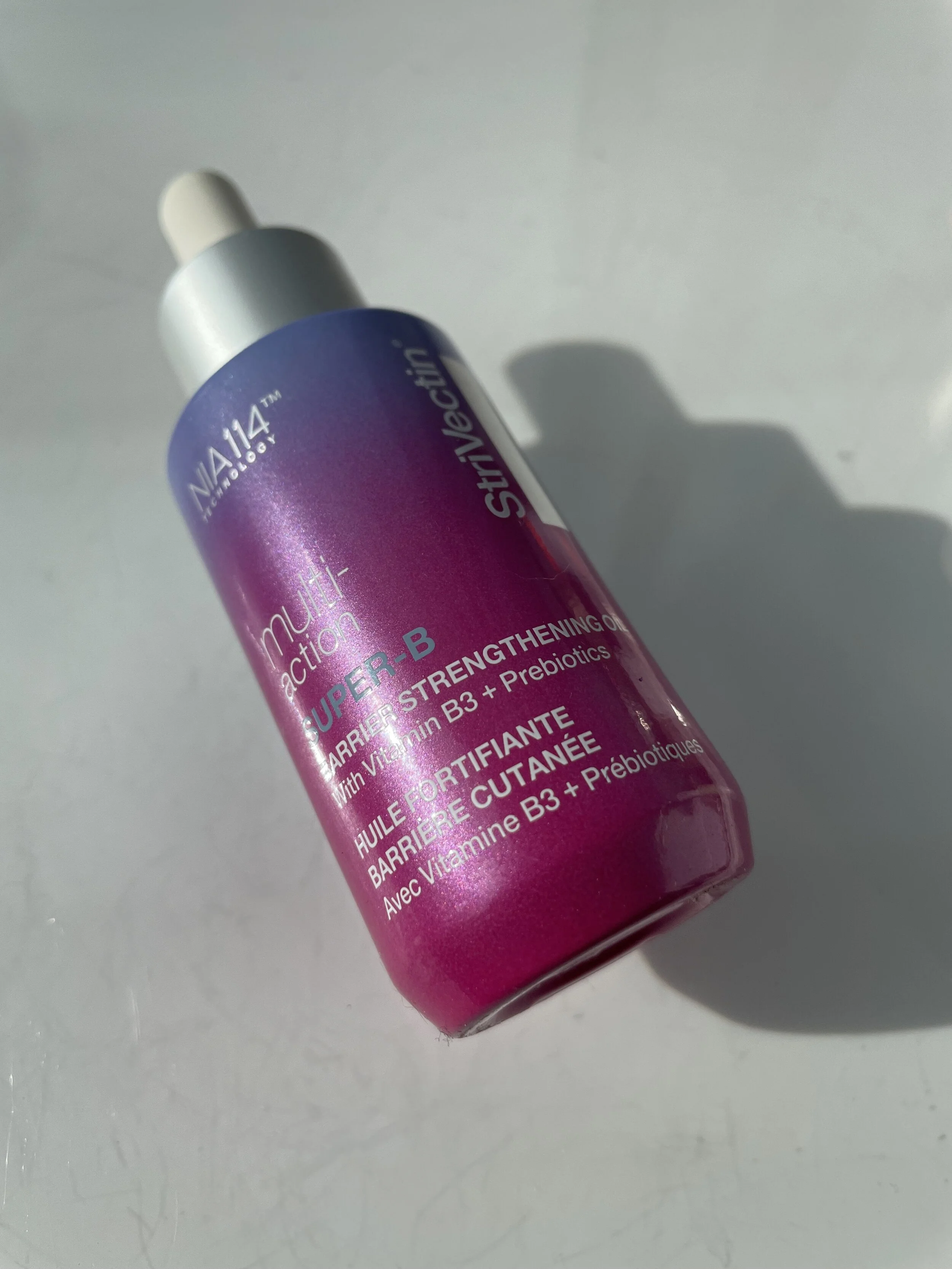SEASONAL SKINCARE TRANSITIONING: FACIAL OILS I LOVE THAT MAKE ME EXCITED FOR COLD WEATHER - PART TWO – BEST FACIAL OILS, BEST FACE OILS FOR DRY SKIN
It’s Thanksgiving weekend as I write this. And of course, I’m reflective. This year was one of the more unusual Thanksgivings for me.
Before Covid (oh, we’ll be saying that for the rest of our lives!), I would always leave the country for Thanksgiving. It’s the perfect time to get away as literally no one works the four or five days over the long holiday. And I’ve spent it in places as far from New York as Tokyo and Moscow.
Without doubt, Tokyo is my favorite city outside of New York. I’ve been three times and I fall deeper in love with the city every time I’m there. To fulfill my craving for Tokyo and Japan in between those IRL adventures, I indulge in my favorite author, Haruki Murakami. I’ve read his most famous work, The Wind Up Bird Chronicle at least a half dozen times. (I feel like I’m due!)
And Sofia Coppola’s film Lost in Translation always hits the spot. If you haven’t been to Tokyo and want a real feel for just how otherworldly and surreal it can be, watch Lost in Translation.
That Thanksgiving in Tokyo was as unreal as it gets — a world away from where I sit writing these words now. I remember staggering around Shibuya in a brain fog thinking, Do the Japanese even eat turkey? Am I gonna find turkey sushi somewhere? If so, would I eat it?! (Psst…I would!)
Alas, I found no turkey in Tokyo that year.
Before I became vegan, turkey was always one of my favorite things to eat during the holidays. Sliced turkey and a hearty slice of pumpkin pie. As a kid on Thanksgiving Day, I loved waking up to the intoxicating aroma of a roasting turkey. And as much as I looked forward to a crispy, juicy slice of white turkey meat, the day after was secretly my favorite. I lived for a cold turkey and mayonnaise sandwich on this squishy, processed, and not-at-all nutritious Wonder white bread. #iykyk
My, how far I’ve come.
This year, I spent Thanksgiving five minutes from home in Brooklyn at a good friend’s apartment. She’s an amazing cook and was so kind to make a vegan Thanksgiving meal for four, featuring a deliciously spicy Thai coconut curry.
Dessert was not pumpkin pie. But, it was nearing a state of nirvana that no slice of pumpkin pie has never even come close to! She made a raw, vegan, gluten-free, sugar-free dark chocolate and coconut tart.
It was as remarkable as that turkeyless Thanksgiving in Tokyo…
The skincare stuff starts here.
Just last week I was saying that it had been the coldest it’s been since mid-March. I was (and remain!) nervous that it’s going to a harsh, damp, brutally cold winter. And lo and behold, it’s snowing today.
To maintain optimal skin health in cold, dry, low-humidity weather, you need to make a real effort to keep your skin from dehydrating. How? With cold weather skincare.
I kicked off the FW21 season with my two-part series on the best face creams for dry skin and all skin types in the cold. Titled, Seasonal Skincare Transitioning: Moisturizers I Love That Make Me Excited For Cold Weather, the series features my top picks for all skin types. Each of the articles highlights one cold weather option for each of the four major skin types — dry, oily/acne prone, sensitive, and normal or all skin types. No matter your skin type, there’s a moisturizer for you. Check out Part One here and Part Two here.
Then last week, I continued my series on Seasonal Skincare Transitioning with the first of two articles on my favorite facial oils titled, Seasonal Skincare Transitioning: Facial Oils I Love that Make Me Excited for Cold Weather - Part One. You can catch the initial collection of four facial oil faves here.
SEASONAL SKINCARE: THE BEST PRODUCTS FROM THE ORDINARY AND NIOD THAT GET ME EXCITED FOR COLD WEATHER!
In part one, the first of my FW21 facial oils included Biography’s Golden Ray Glow Drops. While I’ve reviewed it on the blog previously, I’ve simply fallen in love with it all over again this year. It’s perhaps the most luxurious of the entire FW21 collection.
I’m a huge fan of the clean, democratically priced Naturium brand and have reviewed several of their face serums on the blog over the past several months. They have a number of Vitamin C serums and oils and the brand’s Vitamin C Face Oil is a wonderful formulation. Definitely check it out in Part One.
PRODUCT REVIEW: NATURIUM VITAMIN C FACE OIL – BEST FACIAL OIL WITH VITAMIN C
The third facial oil in my initial article was Dr. Elsa Jungman’s Start Over Moisturizing Serum. It’s formulated to fix the microbiome by rebalancing surface bacteria and strengthening the skin barrier. Dr. Elsa is one of the few true experts on the skin microbiome, what makes it tick, and what it needs to tick right.
Lastly, I featured the Maelove Love 31 Precious Face Oil — my first product inclusion from the clean beauty brand. If you love a sensorial, fragrant facial oil Maelove’s Love 31 will certainly get you excited for cold weather skincare.
What makes facial oils so unique — and uniquely beneficial during cold weather? Well, a great facial oil is the heaviest moisturizer in your defensive arsenal against the dry, low-humidity air characteristic of the colder months no matter the climate. Most people don’t think of facial oils as a “moisturizer.” What usually comes to mind is a cream. And I know facial oils aren’t popular with everyone — particularly those with oily and acne prone skin. Psst…even an oily skin type can benefit from a facial oil suited for oily skin — like the Blume Meltdown Acne Oil.
PRODUCT REVIEW: BLUME | MELTDOWN ACNE OIL - BEST FACIAL OIL FOR OILY SKIN, BEST FACIAL OIL FOR ACNE
In winter, I prefer facial oils to conventional cream moisturizers, especially the ones that regrettably come in jars. I didn’t always understand facial oils and, like so many, believed they were somehow better for other people, perhaps best for very dry skin types.
Oh the misunderstood facial oil. A lot of people dislike them because they tend to sit on the skin, or barely absorb into the skin’s surface. That’s kind of the point. They’re the most occlusive of all skincare products, meaning they’re intended to defend skin against moisture loss. They do that by occluding, or blocking water from escaping through the surface and dehydrating your skin.
What Does a Facial Oil Do and What Are the Benefits of Face Oil?
There is a really wonderful article from the experts on the Paula’s Choice Research Team titled, How Facial Oils Help Skin. Here is a glimpse of their insights:
You may have noticed more and more brands are launching pure oils like argan, jojoba, coconut, or blends of oils with all manner of tempting claims. But do these facial oils live up to their potential?
The research-supported facts about what plant oils can do for skin is rather fascinating. They're not miracles, but the right plant oil or a beautiful a blend of beneficial oils can make a remarkable difference for dry, flaky, or dehydrated skin; in fact, non-fragrant facial oils can be suitable even for eczema-prone skin. Facial oils are for anyone whose skin could use a boost of nourishing, smoothing renewal, especially when seasonal cold or drier climates disturb your skin.
What are Facial Oils?
Facial oils can include any fragrant plant oils (often called essential oils, but they are anything but essential—more on that in a moment), non-fragrant plant oils (your skin will love these) or synthetic oils (such as mineral oil—which gets a bad rap in the world of skincare but for the record, the research doesn't support the negative information you find on the Internet).
Despite the name, these oils can be used anywhere on the face or body—there's no research showing that certain oils are better for one part of your skin or another. Such a notion is without logic or science.
One of the most important benefits of a well-formulated facial oil is to prevent dehydration through trans-epidermal water loss, or TEWL. Dehydration hasn’t traditionally been recognized as one of the main causes of skin aging. In fact, I consider both sun damage and dehydration to be the two key culprits in all signs of aging — including the formation of fine lines and wrinkles, loss of firmness and even sagging.
My own neck is the perfect barometer!
During the colder months, the skin on my neck seems to hollow out as the layers dehydrate and deflate. As hard as I try, it’s often a losing battle. Fortunately, my skin bounces back around March. It’s a fascinating experiment as I struggle to keep my skin optimally hydrated in the cold. I’m much better at it now than I used to be; and that’s because I fully understand the effects of TEWL on skin health.
BRANDS I LOVE: CODEX BEAUTY - CLEAN, NATURAL SKINCARE FOR HEALTHY, YOUTHFUL SKIN
What Is Trans-Epidermal Water Loss?
For a deep-dive into trans-epidermal water loss (or TEWL), there’s an excellent article on the health website Skin Better titled, What Is Transepidermal Water Loss and Why Is it Important? It’s available to read here. In the piece, the author explains TEWL as follows:
“The skin is comprised of three primary layers: the epidermis, the outermost layer; the dermis or middle layer; and the hypodermis, the undermost layer. When water passes from the dermis through the epidermis and evaporates from the skin’s surface, this is known as transepidermal water loss (International Journal of Pharmaceutics).
While TEWL is a process that your skin naturally regulates, certain factors that can damage the skin’s barrier function can also affect TEWL levels. Circumstances such as injury, low-humidity weather conditions and topically applied products that dry out the skin can impact TEWL.
To achieve this, combine humectant and occlusive skincare ingredients.
Transepidermal water loss can contribute to a variety of dry skin conditions, and although it is a natural process, there are ways that you can help your skin stay moisturized and hydrated. Hydration refers to the water content of the skin, whereas moisturization is the skin’s ability to retain those water molecules. Therefore, your skin needs both elements to maintain desirable levels of TEWL.
To achieve this, combine humectant and occlusive skincare ingredients. Humectants help to draw moisture to the epidermis, either from the air if it is humid enough, or from the underlying dermis in low-humidity conditions. Because water content that is drawn from the dermis can be lost through TEWL, it’s important to combine the use of humectants with occlusives. Together, these ingredients create a reservoir of moisture in the epidermis and act as a barrier on the skin to help prevent TEWL by sealing in that moisture. The occlusive agents simultaneously keep pollutants, toxins and harmful bacteria out (Skin Therapy Letter).”
MY FAVORITE HUMECTANT SERUMS FROM PAULA'S CHOICE, THE INKEY LIST AND MORE - BEST HYALURONIC ACID SERUMS
The Skincarma “Lock and Block” Prevents Dehydration
To start, preventing dehydration in the first place requires drinking enough water. That differs for each of us based on our weight, the foods we eat, and the climate we live in. It’s even more important during colder periods.
A good rule is to drink one ounce of water each day for every pound of body weight. So, if you weigh 150 lbs., you’ll need to drink 150 ounces of water each and every day to keep your body and your skin optimally hydrated.
Then, employing skincare to treat and prevent dehydration requires what I refer to as a “lock and block” strategy.
It begins with a dedicated humectant serum applied to the skin in both your AM and PM routines that helps to lock water in. Follow with a moisturizer composed of a healthy balance of both humectants and oils to block and prevent the trans-epidermal water loss that can lead to dehydration.
WATCH MY VIDEO REVIEW OF
SKINCARMA LOCK & BLOCK: THE BEST WAY TO KEEP SKIN HEALTHY & HYDRATED IN DRY, COLD AIR!
ON MY YOUTUBE CHANNEL HERE
One of the great things about facial oils is they’re very often water-free, meaning they last a lot longer. Over the years, I’ve amassed quite the museum-worthy collection of facial oils. And I’m excited to share the second four in my two-part series on my FW21 facial oil picks.
Herbal Face Food’s The Serum I doesn’t seem like a facial oil from the name, right? It’s actually a super lightweight, concentrated serum-oil made with a slew of seriously potent botanical oils and extracts. It has an otherworldly feel on the skin and is one of my favorite product discoveries of 2021 — and a serious contender for the Skincarma Product of the Year.
The Strivectin Super-B Barrier Strengthening Oil is infused with the brand’s proprietary form of Vitamin B3, or Niacinamide. It’s a superb blend on non-fragrant plant oils as well as nourishing probiotics to help rebalance the surface microbiome.
The Paula’s Choice CBD Oil + Retinol is a genius formula and one of the best anti-aging facial oils with Retinol and super-soothing Cannabidiol or CBD. It’s hands down one of my favorite products from the brand.
And rounding out my facial oil picks is Glossier’s Futuredew Oil Serum Hybrid. It’s a fascinating formula with benefits for the complexion that go beyond those of any other facial oil in my entire collection.
Let’s have a look at my FW21 facial oils, which I consider ideal for cold weather in part two of the series…
Herbal Face Food | The Serum I
I’m fascinated by plants and flowers and it’s that curiosity that drew me to Herbal Face Food’s organic, wild-harvested skincare to begin with. I first reviewed the innovative brand on the blog earlier in the year. Herbal Face Food’s The Serum I is a serious contender for the 2021 Skincarma Product of the Year. (Stay tuned!)
So, Herbal Face Food and its founder Michael Zenn have intrigued me from the start. Michael’s story and the founding of his brand began with his own futile attempts to undo self-afflicted skin damage. I think that’s something most of us can relate to!
Excerpt from Herbal Face Food founder Michael Zenn’s personal skin story:
I truly know what it's like to see my face and skin go from youthful, unblemished radiance to something much less than perfect. It was extremely painful to experience. My face had become severely damaged.
I spent 15 years exposing my skin to the harsh conditions of tanning beds, unwittingly causing extreme hyper-pigmentation on my face. I was told by numerous skincare professionals that the damage was permanent. While a quick fix of bleaching and laser surgery might help, it would never be cured and the hyperpigmentation would come back. I was shocked and dismayed that modern science and the world’s most advanced skincare laboratories did not have a long-term solution for me.
So I had to take my skin into my own hands, and look for the answer outside the lab. That’s when I began to discover plant-based intelligence and science. I knew that plants existed millions of years before humans, but what I found was that plant intelligence and plant-chemicals are indeed far more complex and powerful than their synthetic counterparts.
Collaborating with leading herbalists and botanists, over a decade we sought-out and identified the world’s most powerful antioxidant plants and phytochemicals. Harnessing super-concentrated, whole-plant chemicals, we created the most potent anti-aging serum ever formulated.
Now I finally had a product that could heal my skin. I began to use the newly minted serum to treat my skin issues, and within just four weeks all of the “permanent” hyper-pigmentation had disappeared.”
My own experience with two of the Herbal Face Food serums has been exceptional. To be honest, there has never been anything comparable in my daily skincare routine. The products are that unique.
In my initial article on the brand, which you can read here, I reviewed Herbal Face Food’s The Serum I and the highly concentrated Herbal Face Food The Cure X. Both feel like nothing I’ve ever experienced on my skin before.
What Is Organic Skincare and Is Organic Skin Care better?
I think about this often. Should I only be eating organic fruits and vegetables? The answer to that seems obvious. Yes, when given the choice, opt for organic. But what about skincare? Is there a real benefit to organic products and ingredients? I found an insightful piece that takes a deep-dive into all-things-organic in Elle magazine titled, Everything You Need To Know About Organic Skincare According To May Lindstrom.
Excerpts from the piece:
Organic skincare - it's always been on our 'if we were being better people' to do list we've never quite got around to. But, if we're going by the theory that organic produce is better for our diets, surely organic skincare is just as beneficial for our complexions? Or is it
Clearing up the confusion is natural beauty expert, brand founder and proud owner of the best skin we've ever encountered in real life, May Lindstrom.
What are the benefits of organic skincare?
“Just like with food, organically grown ingredients often have higher nutrient levels, and are missing chemical residues that can irritate skin or potentially cause long term harm in the body.
“Your skin absorbs whatever you put on it, so I follow the same philosophy for skincare as I would in my diet. There is simply no place for pesticides or unnecessary synthetics. It's not about being an "organic" brand as much as it is creating the highest possible quality skin treats that I am capable of.”
Of the two Herbal Face Food serums, the brand’s The Serum I is “level one” in the routine and considered the opening act of the skin repair regimen. It’s the brand’s daily go-to serum with an oily texture that makes it one of the more unique facial oils I’ve come across. In fact, if you prefer a lighter facial oil or even a dry oil, Herbal Face Food’s The Serum I is for you.
Consisting of 25 of what the brand characterizes as “the world’s most powerful botanicals including the top 5 rarest, most expensive plant concentrates on the planet,” Herbal Face Food’s The Serum I feels like life on your face. It’s as if the plants hibernating in the bottle come alive again on your skin.
Upon application, you become immediately aware that something weirdly invigorating is occurring on the surface of your skin. It’s not an off-putting burning sensation like you get with an acid treatment. Rather, it’s more of an intense sensation — a bizarre intensity I’ve never experienced before. Like your skin being jolted back to life!
The potent blend of plant-derived enzymes and antioxidants is activated as they are absorbed into the skin’s surface layers. Within 10 minutes, that initial jarring sensation recedes, though there’s a discernible underlying feeling for about an hour or so afterwards.
At no time does my skin ever become red or even appear irritated — as is my experience with fragrant plant “essential” oils. In fact, there is only a single fragrant plant oil in the formula, about mid-way down the 25-ingredient-deep INCI. Within about two hours, my complexion seems to become more reflective and alive. I look and feel refreshed and awake.
Herbal Face Food describes The Serum I concoction this way: “Our powerful, potent serum is packed with Anti-Oxidants and Anti-aging phytonutrients that heal your skin at the cellular level and address the top signs of aging in 3 days or less (no kidding). Start with Serum I and power your way up through the Serum Series.”
I’ve really put the stuff to the test, wanting to assure myself that what my skin was reacting to wasn’t just irritation similar to what I experience with fragrant plant oils. Though given the fact that there is but a lone fragrant plant oil in the formula in the form of Cananga Odorata Leaf Oil (aka Ylang Ylang), I was pretty confident something else was indeed going on.
So I applied it to my face right after I shaved!
SKINCARMA X HERBAL FACE FOOD EXCLUSIVE!
FOR A LIMITED TIME, SAVE 20% OFF HERBAL FACE FOOD!
CLICK HERE AND ENTER CODE SKINCARMA20 AT CHECKOUT
On my freshly shaven skin, I experienced the same unusual lively sensation as I have on the rest of my face whenever using Herbal Face Food’s The Serum I. No irritation, no burning, no redness. Just that invigorating jolt.
The Serum I formula is a healthy blend of numerous antioxidant botanicals with nary a drop of water in the INCI. The first ingredient is, in fact, common Aloe Barbadensis Leaf Extract, proven to effectively soothe and nourish the skin. Notably, the entire top ten consists of one botanical extract after another. I’m not sure I’ve ever seen that before. The first ten ingredients are all plant extracts! And the texture is a reflection of that. It’s super lightweight, with a slightly pulpy, vaguely oily consistency.
Herbal Face Food says that The Serum I is suitable for even sensitive skin types. While I sometimes experience sensitivity on my forehead, I wouldn’t characterize my skin as sensitive. That said, I haven’t experienced any signs of irritation or sensitivity on my forehead or anywhere else for that matter. Just healthy, refreshed skin that appears to come alive!
What I like about it: The Herbal Face Food The Serum I is one of the most innovative skincare products I’ve come across. And it’s one of the best natural facial oils (or is it a serum?!) with a slew of pro-skin health botanical extracts, too. If you love a lightweight facial oil, this one’s for you.
What I don’t like about it: I certainly don’t love the weird burning sensation. Though it goes away within an hour, it’s somewhat disconcerting and I’m sure would turn off a lot of people.
Who it’s for: All skin types and especially those who prefer or require a super lightweight facial oil.
SHOP THE BLOG: For a limited time, save 20% off Herbal Face Food with code SKINCARMA20. Enter the code to purchase the Herbal Face Food The Serum I (30mL) for $104 (reg. $130) here.
SKINCARMA X HERBAL FACE FOOD EXCLUSIVE!
FOR A LIMITED TIME, SAVE 20% OFF HERBAL FACE FOOD!
CLICK HERE AND ENTER CODE SKINCARMA20 AT CHECKOUT
The Ingredient List of the Herbal Face Food The Serum I:
Aloe Barbadensis Leaf Extract, Simmondsia Chinensis Seed Extract, Haematococcus Pluvialis Extract, Helichrysum Stoechas Flower Extract, Lavandula Angustipolia Flower/Leaf/Stem Extract, Origanum Vulgaris Flower Extract, Eugenia Caryophyllus, Thymus Vulgaris Flower/Leaf Extract, Commiphora Myrrha Leaf/Cell Extract, Jasminum Officinale Flower/Leaf Extract, Vetiveria Zizanioides Root Extract, Cananga Odorata Leaf Oil, Pogostemon Cablin Leaf Extract, Santalum Album Extract, Elettaria Cardamomum Seed Extract, Citrus Nobilis, Citrus Medica Limonum Leaf Peal Stem, Cymbopogon Flexuosus Leaf Oil, Boswellia Carterii, Croton Lechleri, Daucus Carota Sativa (Carrot) Seed Oil, Ormenis Mixta, Rose Damenscena, Leptospermum Scoparium Leaf Extract, Callitris Intratropica, Vanilla Planifolia Bean Extract.
RETINOL, RETINOIDS, RETINOIC ACID PART ONE: BEST RETINOL SERUMS, BEST RETINOL FACE CREAMS
StriVectin | Super-B Barrier Strengthening Oil with Vitamin B3 and Prebiotics
Here in NYC a change of seasons is always only a matter of a few weeks away. And now that we’re knee-deep in the fall chill and soon to be knee-deep in snow, I want products that both keep my skin from drying out and keep my complexion looking less dead.
Strivectin introduced their Super-B Barrier Strengthening Oil with Vitamin B3 and Prebiotics around mid-year and I have to say it’s perfect for keeping my skin hydrated while keeping my complexion looking alive.
If you’re not familiar with Strivectin, the brand’s formulas are all powered by a proprietary form of Niacin, a variation of Vitamin B3, that the brand calls NIA-114. This molecular cousin of Niacinamide possesses a lipidic quality that enables the molecule to penetrate the skin barrier more deeply. Similar to Niacinamide, Strivectin’s NIA-114 molecule has the ability to strengthen the skin barrier, brighten the complexion, and defend against aging environmental aggressors.
Strivectin’s Super-B Barrier Strengthening Oil with Vitamin B3 and Prebiotics is a rich, nourishing oil that dries down nicely, though I wouldn’t describe it as a dry oil per se.
In addition to the brand’s Niacinamide alternative (listed on the INCI as Myristyl Nicotinate), there’s a healthy dose of skin nourishment in the form of Squalane, Passiflora Edulis Seed Oil, Rosa Canina Fruit Oil, Cocos Nucifera (Coconut) Oil, Simmondsia Chinensis (Jojoba) Seed Oil, Limnanthes Alba (Meadowfoam) Seed Oil — all in the top ten and all perfect for locking moisture in the skin to prevent TEWL.
But what is most intriguing and unique about the Super-B Barrier Strengthening Oil is the inclusion of prebiotics to support the skin’s microbiome health. You’ve probably been hearing a lot more about them lately. Prebiotics are essentially food or nutrition for the good bacteria in the microbiome, or probiotics, helping them to proliferate in and on the body’s microbiomes.
What Are Prebiotics and Are Prebiotics Good for Skin?
Prebiotics, probiotics and post-biotics are a legitimate trend in skincare over the past two to three years — with probiotics, or good bacteria, leading the way. So what exactly are prebiotics and what is their benefit to the skin?
According to the experts on the Paula’s Choice Research Team, prebiotic are becoming increasingly important in the maintenance of skin health. The team outlines their unique benefits to the skin in an article titled simply, What Are Prebiotics for Skin?
An excerpt from the piece:
Prebiotics are an intriguing group of ingredients making skin care headlines because of the important role they can play in addressing a variety of skin concerns. Their gut-health benefits when consumed orally are well-established through research, and now emerging studies are shedding fascinating light on how topical prebiotics can help when applied to skin.
Prebiotics are essentially foods consumed by probiotics. Probiotics are the good bacteria in and on the body that keep our bodies balanced and healthy inside and out (1).
Experts around the world consider probiotics fundamental to being healthy and youthful, and since prebiotics are the natural partner to probiotics, having both gives you the best of both worlds. As it turns out, the benefits of prebiotics and probiotics in our gut are also apparent when these ingredients are applied to skin (2).
Applying prebiotics to skin helps probiotics thrive so they can:
Keep the surface of skin—its first line of defense—balanced, younger-looking, and strong (3).
Offset factors that lead to redness, dryness, and a weakened surface (4).
Ward off signs of aging skin (4).
Restore a healthy microbiome balance (good bacteria) (2).
What Prebiotic Ingredients Should I Look for In Skin Care?
Look for skin care products with prebiotic plant sugars, such as xylitol, rhamnose, and a large group of ingredients known as fructooligosaccharides (including raspberry oligosaccharides) (4). Glucomannan is a particularly interesting prebiotic due to the way it works with a wide range of probiotics that help control acne (5).
Foods with prebiotics include garlic, onions, oats, barley, wheat bran, asparagus, bananas, and flaxseed as well as a plant fiber known as inulin, found in chicory root (1). Some of these plant extracts or their derivatives are also included in skin care products where you can easily reap the benefits of applying prebiotics to skin.
Serums or moisturizers with prebiotics such as these may already be in your routine (check your ingredient labels to make sure).
Strivectin’s Super-B Barrier Strengthening Oil with Vitamin B3 and Prebiotics is a supremely nourishing, balancing, pro-skin health treatment and, in my opinion, one of the best products the brand has to offer.
If you’ve been eager to try Strivectin out, the Super-B Barrier Strengthening Oil is the ideal place to start. And, quite surprisingly, the brand has just relaunched on the Sephora website!
What I like about it: The Strivectin Super-B Barrier Strengthening Oil with Vitamin B3 and Prebiotics is a rather well-rounded facial oil that delivers multiple benefits for the skin. It nourishes and balances the surface microbiome and with its high level of Niacinamide, it helps to strengthen the skin barrier and brighten a dull complexion. That’s everything skin needs in the cold!
What I don’t like about it: At $72, it’s more expense than most of the facial oils in its class. But, as I say with costlier skincare, if you’re going to pay more, at least buy something that’s well-formulated and pro-skin health. The Super-B Barrier Strengthening Oil sure is.
Who it’s for: All skin types, except perhaps very oily and acne-prone.
SHOP THE BLOG: Purchase the Strivectin Super-B Barrier Strengthening Oil with Vitamin B3 and Prebiotics for $72 here.
The Ingredient List of the Strivectin Super-B Barrier Strengthening Oil:
 sii|emo 0 1, Myristyl Nicotinate
sii|emo 0 1, Myristyl Nicotinate  cci, Passiflora Edulis Seed Oil
cci, Passiflora Edulis Seed Oil  emo, Plankton Extract, Bacillus Ferment, Rosa Canina Fruit Oil emo, Cocos Nucifera (Coconut) Oil
emo, Plankton Extract, Bacillus Ferment, Rosa Canina Fruit Oil emo, Cocos Nucifera (Coconut) Oil  emo|perf 0 4, Simmondsia Chinensis (Jojoba) Seed Oil
emo|perf 0 4, Simmondsia Chinensis (Jojoba) Seed Oil  emo 0 0-2, Limnanthes Alba (Meadowfoam) Seed Oil
emo 0 0-2, Limnanthes Alba (Meadowfoam) Seed Oil  emo, Avena Sativa (Oat) Kernel Oil, Helianthus Annuus (Sunflower) Seed Oil
emo, Avena Sativa (Oat) Kernel Oil, Helianthus Annuus (Sunflower) Seed Oil  emo 0 0, Oryza Sativa (Rice) Bran Extract, Helianthus Annuus (Sunflower) Extract
emo 0 0, Oryza Sativa (Rice) Bran Extract, Helianthus Annuus (Sunflower) Extract  so|emo, Rosmarinus Officinalis (Rosemary) Leaf Extract
so|emo, Rosmarinus Officinalis (Rosemary) Leaf Extract  aox|so|amic, Quercus Suber Bark Extract, Oak Root Extract, Panthenyl Triacetate, Glyceryl Caprylate pres, Glycerin
aox|so|amic, Quercus Suber Bark Extract, Oak Root Extract, Panthenyl Triacetate, Glyceryl Caprylate pres, Glycerin  sii|h 0 0, Naringenin, Caprylhydroxamic Acid chel, Fragrance/Parfum
sii|h 0 0, Naringenin, Caprylhydroxamic Acid chel, Fragrance/Parfum  perf, Tocopherol
perf, Tocopherol  aox 0-3 0-3, Citric Acid buff, Hydroxycitronellal
aox 0-3 0-3, Citric Acid buff, Hydroxycitronellal  perf
perfThe Best Niacinamide Serums And Treatments
Paula’s Choice | CBD Oil + Retinol
I first reviewed the Paula’s Choice CBD Oil + Retinol in a fun blog article I wrote at the outset of the pandemic titled, Three of the Best Facial Skincare Products I Want with Me in the Skinpocalypse!
In the shower one morning, I was imagining what I would do if I suddenly had to grab Orpheus and a few skin care products and leave — as so many of my fellow New Yorkers had done to escape the coming scourge. (For the record, I stuck it out and never left!)
I referred to this imaginary circumstance as the Skinpocalypse. Naturally, I’d need a moisturizer of some kind and wanted one that also had anti-aging, soothing and reparative properties. Something super versatile. So, Paula’s CBD Oil + Retinol seemed like the perfect option.
THREE OF THE BEST FACIAL SKINCARE PRODUCTS I WANT WITH ME IN THE SKINPOCALYPSE!
The CBD Oil + Retinol happens to be among the best products from Paula’s Choice that the brand has introduced in the last two years. Others include the Paula's Choice CLINICAL Discoloration Repair Serum and the 10% Azelaic Acid Booster.
The Paula’s Choice CBD Oil + Retinol is a 98% natural formula that the team at Paula’s Choice says “targets multiple triggers of aging.” It’s formulated with 150mg of Cannabidiol and a 0.5% concentration of Retinol — just enough to get the job done gently, without irritation.
It’s such a fascinating facial oil and perhaps the best anti-aging facial oil for wrinkles and irritation. That makes it ideal for my FW21 collection of cold weather picks. The intriguing thing is that the level of CBD in the CBD Oil + Retinol formula helps to calm and defend against potential irritation — more common in the harsher, colder months.
I think it’s kind of brilliant to pair two potent actives like CBD and Retinol in one treatment and I love that Paula and the team thought of it first. I have yet to come across anything that comes close to the efficacy.
What Is Retinol and What Does Retinol Do for the Skin?
It’s commonly accepted that Retinol and retinoids, more specifically, are the gold standard in anti-aging. Like Vitamin C and Niacinamide (Vitamin B3), the Vitamin A derivative has multiple pro-skin health, anti-aging benefits. Among them are the smoothing of lines and wrinkles, potent antioxidant defense and visible skin firming. As with Niacinamide, topical retinoids — as all derivatives of Vitamin A are referred to — can even minimize the appearance of pores and defend skin against aging environmental damage.
(Psst…check out my top picks of the best Retinol serums and best face creams with Retinol here.)
There’s a superb piece on retinoids by the experts on the Paula’s Choice Research Team titled, The Complete Guide To Retinol: The Anti-Aging (And Anti-Acne) Hero — which you can catch here. Here is what I found most salient:
Retinol is classified as a Cell-Communicating Ingredient, which means that it can tell a skin cell how to behave. Retinol ‘tells’ developing skin cell in the lower layers of the skin – called the dermis, to develop normally, instead of a sun-damaged or genetically malformed skin cell. This is how, over time, Retinol can address multiple skin concerns.
Another way Retinol works is also by telling the older cells in the upper layer of skin to die quicker which in turn allows the newer, healthier skin to surface faster. This quicker skin cell turnover rate, paired with cell communicating abilities is what makes Retinol such a superstar!
There are many derivatives and strengths of retinoids available in both over-the-counter (OTC) and prescription products today. The term “Retinol” is the name of the purest form of Vitamin A, and used most often to refer to the non-prescription version of Retinoids.
However, Retinol itself is not active. It has to go through a conversion process in the skin to get to the active form which is then usable by the skin.
Retinyl Palmitate –> Retinol — > Retinaldehyde –> All-Trans-Retinoic Acid (Tretinoin)
And about the power pair that are Retinol and CBD?
Here’s what the experts on the Paula’s Choice Research Team have to say:
“CBD and retinol complement one another to help prevent and repair visible signs of aging. CBD works by telling key surface cells to stop firing signals that lead to stressed, compromised skin — the underlying cause of aging. At the same time, retinol uniquely communicates with skin, telling it to look younger, smoother and more refined.”
The CBD Oil + Retinol has a medium weight texture. It’s not a dry oil, at one end of the spectrum, and not a rich, heavy facial oil on the other. It’s somewhere in between. I love using it in my PM routine and have used it up to thrice weekly, never experiencing any irritation whatsoever.
In addition to both Cannabidiol and Retinol, the formula contains numerous nourishing non-fragrant plant oils. In fact, the very first ingredient, likely 60-70% of the formula is Cannabis Sativa Seed Oil, also known as Hemp Seed Oil.
Cannabis Sativa Seed Oil is rated among the best actives for the skin by the Paula’s Choice team. It’s rich in the omega fatty acids that skin needs to replenish itself and to strengthen the skin barrier against trans-epidermal water loss.
Paula’s facial oil with CBD is also packed with phospholipids, plant sterols, amino acids and antioxidant vitamin E. Ingredients two and three are Meadowfoam Seed Oil and bio-compatible Squalane. The CBD Oil + Retinol is seriously good, pro-skin health stuff. Plus, a little goes a long way — enough to last a solid 3-4 months with nearly daily use.
What I like about it: The Paula’s Choice CBD Oil + Retinol is one of the best anti-wrinkle facial oils I’ve ever come across. The power pair of Cannabidiol and Retinol is simply genius. It’s an exceptional formula and exceptionally ideal for use during the cold, dry months to prevent dehydration, replenish moisture, smooth the look of lines and wrinkles, and soothe irritation. A real slam dunk!
What I don’t like about it: I actually like everything about it!
Who it’s for: Most skin types except, perhaps, very oily or acne prone.
SHOP THE BLOG: Purchase the Paula’s Choice CBD Oil + Retinol for $54 here.
The Ingredient List of the Paula’s Choice CBD Oil + Retinol:
 emo, Squalane (Plant-Derived Emollient/Skin-Replenishing)
emo, Squalane (Plant-Derived Emollient/Skin-Replenishing)  sii|emo 0 1, Caprylic/Capric Triglyceride (Skin-Replenishing) emo, Glycine Soja (Soybean) Oil (Non-Fragrant Antioxidant Plant Oil)
sii|emo 0 1, Caprylic/Capric Triglyceride (Skin-Replenishing) emo, Glycine Soja (Soybean) Oil (Non-Fragrant Antioxidant Plant Oil)  emo|perf 0 3, Borago Officinalis Seed Oil (Non-Fragrant Antioxidant Plant Oil)
emo|perf 0 3, Borago Officinalis Seed Oil (Non-Fragrant Antioxidant Plant Oil)  so|emo, Raphanus Sativus (Radish) Seed Oil (Non-Fragrant Antioxidant Plant Oil) emo, Linum Usitatissimum (Linseed) Seed Oil (Flax/Non-Fragrant Antioxidant Plant Oil)
so|emo, Raphanus Sativus (Radish) Seed Oil (Non-Fragrant Antioxidant Plant Oil) emo, Linum Usitatissimum (Linseed) Seed Oil (Flax/Non-Fragrant Antioxidant Plant Oil)  emo|perf, Helianthus Annuus (Sunflower) Seed Oil (Non-Fragrant Antioxidant Plant Oil)
emo|perf, Helianthus Annuus (Sunflower) Seed Oil (Non-Fragrant Antioxidant Plant Oil)  emo 0 0, Cannabidiol (Skin-Restoring) aox, Retinol (Skin-Restoring)
emo 0 0, Cannabidiol (Skin-Restoring) aox, Retinol (Skin-Restoring)  cci, Centella Asiatica Extract (Skin-Soothing)
cci, Centella Asiatica Extract (Skin-Soothing)  so|aox|h, Lupinus Albus Seed Oil (Non-Fragrant Antioxidant And Omega Plant Oil), Tocopherol (Vitamin E/Antioxidant)
so|aox|h, Lupinus Albus Seed Oil (Non-Fragrant Antioxidant And Omega Plant Oil), Tocopherol (Vitamin E/Antioxidant)  aox 0-3 0-3, Tocopheryl Acetate (Vitamin E/Antioxidant) aox 0 0, Water (Aqua) solv
aox 0-3 0-3, Tocopheryl Acetate (Vitamin E/Antioxidant) aox 0 0, Water (Aqua) solvBest Retinol Face Creams And Serums
Glossier | Futuredew Oil Serum Hybrid
I have had my eye on Glossier’s Futuredew Oil Serum Hybrid for quite some time. Over the course of the year, I’ve really gotten to know the Glossier brand. I wouldn’t call myself a #glossierfanboy just yet. My affinity for the pink, girlie brand doesn’t go that deep.
But that’s not to say that I’m not an admirer of the brand’s relatively well-formulated, affordable skincare products. In particular, I actually quite like Glossier’s three “super serums” — Super Pure, Super Glow and Super Bounce.
In the grand scheme of things, the Glossier Super Pure Niacinamide + Zinc Serum is not the best Niacinamide serum, but it’s effective for the price — and one of the best Niacinamide serums for oily skin or acne prone skin.
(Psst…if you want the best Niacinamide serum, check out my picks of the Best Niacinamide Serums and Treatments here.)
PRODUCT REVIEW: GLOSSIER SUPER PURE NIACINAMIDE + ZINC SERUM - BEST NIACINAMIDE SERUM FOR OILY SKIN
Also ideal for oily and acne-prone skin is the Glossier Super Glow Vitamin C + Magnesium Serum. While the $28 Super Glow is a relatively uncomplicated formula, it’s packed with intrigue in the form of pure mineral magnesium, or Magnesium PCA. Minerals help to regulate water flow within the skin’s layers to balance out hydration levels and maintain skin health.
Rounding out the brand’s three super serums is the Glossier Super Bounce Hyaluronic Acid + Vitamin B5 Serum. I featured it in my recent blog article titled, New Hyaluronic Acid Serums I Love from Farmacy Beauty, Herbivore, Glossier and More - Best Hyaluronic Acid Serums, Best Hydrating Serums For Face. Psst…you can catch the full piece here.
Also priced at $28, the Super Bounce Hyaluronic Acid serum is a viable option if you’re in the market for a well-formulated hydrating serum at a great price.
PRODUCT REVIEW: GLOSSIER SUPER BOUNCE HYALURONIC ACID + VITAMIN B5 SERUM - BEST HYALURONIC ACID SERUM
Glossier’s Futuredew Oil Serum Hybrid is the most unique product I’ve experienced from the brand thus far — and the most unique in my FW21 picks of the best facial oils. Glossier says Futuredew delivers “an instant dewy glow that lasts.” And it sure does.
The first time I tried Futuredew I didn’t know what to expect. With its thick, opaque, pink-hued texture, Glossier had me thinking Futuredew was a super lightweight foundation. But it’s remarkably transformative on the skin. The Glossier Futuredew Oil Serum Hybrid is indeed some sort of hybrid — one part replenishing facial oil, one part complexion perfecter.
On the replenishing side, Futuredew is a blend of nourishing non-fragrant plant oils that help to moisture skin and prevent TEWL. Among these are a high concentration of Squalane, at ingredient number three — after useless water and humectant Glycerin. Squalane is a superb, skin-compatible plant oil.
What Is Squalane and What Does Squalane Do for the Skin?
There’s an excellent article crafted by the experts on the Paula’s Choice Research Team titled, What is Squalane Oil and How Does it Benefit Skin? The piece delves into what makes Squalane unique — and why it’s so uniquely beneficial to the skin.
What is Squalane Oil?
Squalane oil is an emollient, a type of ingredient that works very much like skin’s own oil (sebum) to prevent moisture loss. Chemically, it’s a hydrocarbon, a group of ingredients made of only hydrogen and carbon. Common skin-friendly hydrocarbons for skin include petrolatum and mineral oil; squalane is the primary one from the plant world, so it’s a good alternative if you want to avoid petrochemicals.
A unique aspect of squalane is that it’s a modified form of squalene, one of the key components in our sebum (1, 2). This fact makes squalane an ingredient skin instantly recognizes and knows how to use, but there’s more to the story than simply being an emollient.
Some people wonder if squalane is a vegan ingredient; traditionally, the squalene from which it’s created was derived from shark liver oil. Today, the majority of skin care brands using squalane are choosing a plant-derived, sustainable source. It occurs naturally in olive, wheat bran, rice bran, and amaranth oils (1, 3). Paula’s Choice uses olive-derived vegan squalane. It can also be produced via biotechnology from the yeast Saccharomyces cerevisae, where it’s often referred to as sugar derived.
If you’re curious, you can read the entire piece here.
In addition to Squalane, the Glossier Futuredew formula contains some of the best anti-aging, antioxidant plant oils including Jojoba Seed Oil, Evening Primrose Oil, and Grape Seed Oil. These combine to give it a heavier texture on application that dries down surprisingly quickly, leaving a soft, velvety feel on the skin.
On the complexion perfecting side, Futuredew contains a pinkish tint that blends into skin to help even out skin tone. It’s not so crazy that it looks like makeup — or is even discernible on the skin. There’s also a small amount of light-reflecting mica. It reminds me of a lightweight BB cream.
I honestly wasn’t expecting to like Glossier’s Futuredew Oil Serum Hybrid — let alone include it in my top picks of facial oils. It’s so unique I just had to. It has really surprised me!
What I like about it: The Glossier Futuredew Oil Serum Hybrid is one of the brand’s better formulas and it really has surprised me. I thought I’d seen it all! I love its rich blend of skin-compatible, replenishing plant oils that help to prevent moisture loss. Combined with its complexion enhancers, it’s ideal for re-invigorating a dry, dehydrated, sullen complexion.
What I don’t like about it: Because of its complexion enhancing properties, it remains on the skin as intended. That can feel slightly uncomfortable if you apply too much of it. (And I have!)
Who it’s for: All skin types except perhaps very oily or acne-prone.
SHOP THE BLOG: Purchase the Glossier Futuredew Oil Serum Hybrid for $24 here.
I hope this helps you to appreciate the benefits of a facial oil in colder weather and to perhaps find one that’s right for your skin during the cold months ahead. I invite you to check out part one of the Facial Oils I Love that Make Me Excited for Cold Weather here.
See you next week…
💟 Carmine @skincarma
The Ingredient List of the Glossier Futuredew Oil Serum Hybrid:
 sii|h 0 0, Squalane
sii|h 0 0, Squalane  sii|emo 0 1, Isoamyl Laurate emo, Polyglyceryl-3 Polyricinoleate emu|vc, Butylene Glycol h|solv|vc 0 1, Simmondsia Chinensis (Jojoba) Seed Oil
sii|emo 0 1, Isoamyl Laurate emo, Polyglyceryl-3 Polyricinoleate emu|vc, Butylene Glycol h|solv|vc 0 1, Simmondsia Chinensis (Jojoba) Seed Oil  emo 0 0-2, Propanediol solv|h, Isohexadecane emo|solv, 1,2-Hexanediol solv, Oenothera Biennis (Evening Primrose) Oil
emo 0 0-2, Propanediol solv|h, Isohexadecane emo|solv, 1,2-Hexanediol solv, Oenothera Biennis (Evening Primrose) Oil  so|emo 2 3, Olive Oil Polyglyceryl-6 Esters emo|emu, Vitis Vinifera (Grape) Seed Oil
so|emo 2 3, Olive Oil Polyglyceryl-6 Esters emo|emu, Vitis Vinifera (Grape) Seed Oil  aox|emo, Rosa Canina Fruit Oil emo, Polyglyceryl-6 Pentaoleate emu, Sodium Hyaluronate
aox|emo, Rosa Canina Fruit Oil emo, Polyglyceryl-6 Pentaoleate emu, Sodium Hyaluronate  sii|h 0 0, Tocopheryl Acetate aox 0 0, Evodia Rutaecarpa Fruit Extract
sii|h 0 0, Tocopheryl Acetate aox 0 0, Evodia Rutaecarpa Fruit Extract  , Rosmarinus Officinalis (Rosemary) Leaf Oil
, Rosmarinus Officinalis (Rosemary) Leaf Oil  aox|amic, Ricinus Communis (Castor) Seed Oil emo|perf 0 0-1, Hydrogenated Castor Oil emo|vc|emu|surf 0 1, Hydroxyacetophenone aox, Sodium Chloride vc, Disteardimonium Hectorite vc, Propylene Carbonate solv|vc, Tin Oxide col|abrasive/scrub|vc, Mica col, Titanium Dioxide (Ci 77891) col 0 0, Iron Oxides (Ci 77491) col 0 0
aox|amic, Ricinus Communis (Castor) Seed Oil emo|perf 0 0-1, Hydrogenated Castor Oil emo|vc|emu|surf 0 1, Hydroxyacetophenone aox, Sodium Chloride vc, Disteardimonium Hectorite vc, Propylene Carbonate solv|vc, Tin Oxide col|abrasive/scrub|vc, Mica col, Titanium Dioxide (Ci 77891) col 0 0, Iron Oxides (Ci 77491) col 0 0The Best Sunscreens for Face
WATCH MY VIDEO REVIEW OF
NEW PAMPERING FACIAL OILS THAT WOW ME - FROM KJAER WEIS, BIOSSANCE AND MORE
ON MY YOUTUBE CHANNEL HERE
WATCH MY VIDEO REVIEW OF
MY WINTER SKIN SAVIOR: SKINFIX BARRIER+ LIPID REPLENISHING SKINCARE
ON MY YOUTUBE CHANNEL HERE
WATCH MY VIDEO REVIEW OF
MY FAVORITE HUMECTANT SERUMS FROM PAULA'S CHOICE, THE INKEY LIST, GHOST DEMOCRACY AND MORE
ON MY YOUTUBE CHANNEL HERE
WATCH MY VIDEO REVIEW
HOW’S YOUR MICROBIOME DOING? THE BEST WAY TO CHECK YOUR MICROBIOME HEALTH…
ON MY YOUTUBE CHANNEL HERE
WATCH MY VIDEO REVIEW
A COMPLETE K-BEAUTY ROUTINE WITH THE BEST FACIAL SKINCARE FROM PURITO, COSRX, MISSHA & MORE!
ON MY YOUTUBE CHANNEL HERE
WATCH MY VIDEO REVIEW
RETINOL, RETINOIDS, RETINOIC ACID PART ONE - THE BEST RETINOL FACE CREAMS & SERUMS
ON MY YOUTUBE CHANNEL HERE
WATCH MY VIDEO REVIEW OF
MY WINTER SKIN SAVIOR: SKINFIX BARRIER+ LIPID REPLENISHING SKINCARE
ON MY YOUTUBE CHANNEL HERE
SKINCARMA X HERBAL FACE FOOD EXCLUSIVE!
FOR A LIMITED TIME, SAVE 20% OFF HERBAL FACE FOOD!
Enter code SKINCARMA20 at checkout.
WATCH MY VIDEO REVIEW
THE YEAR’S BEST VITAMIN C SERUMS WITH THE ORDINARY, CLINIQUE, BEAUTY STAT & MORE!
ON MY YOUTUBE CHANNEL HERE
WATCH MY VIDEO REVIEW
AMPERNA PROBIOTIC SKINCARE AND TWO OF THE BEST ANTI-AGING SERUMS FOR SENSITIVE SKIN
ON MY YOUTUBE CHANNEL HERE
WATCH MY VIDEO REVIEW
MY #SELFCARESUNDAY ESSENTIALS WITH SKINFIX, HERBIVORE AND SELFLESS!
ON MY YOUTUBE CHANNEL HERE


